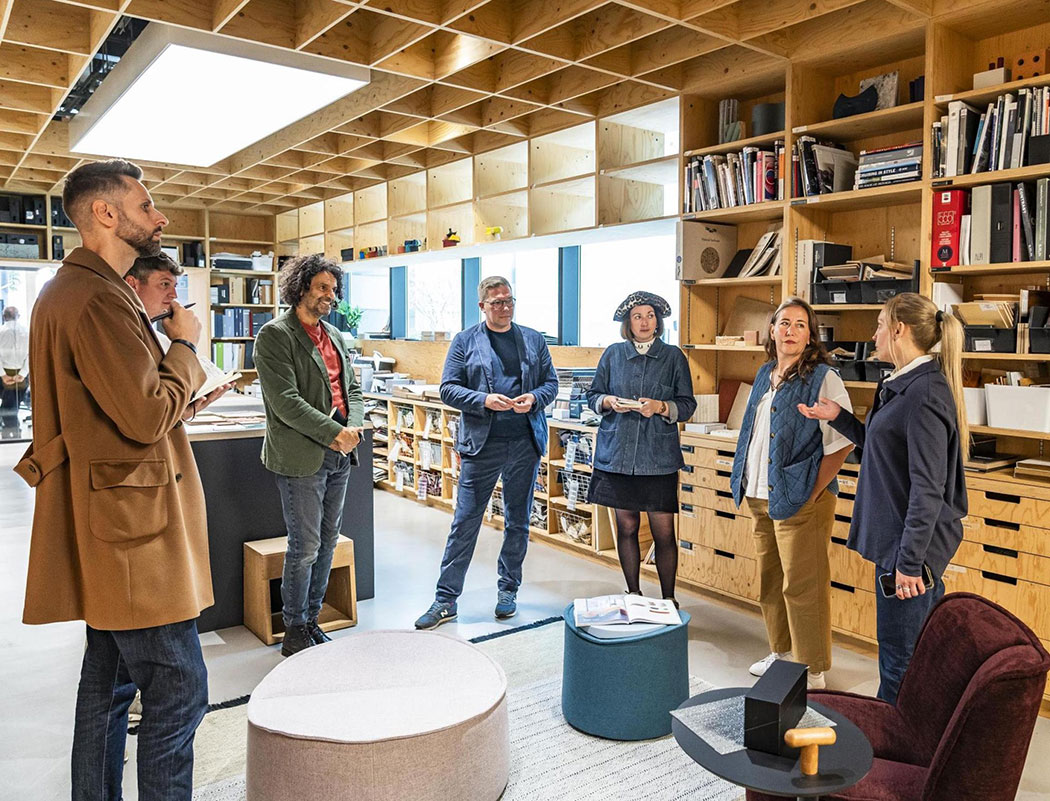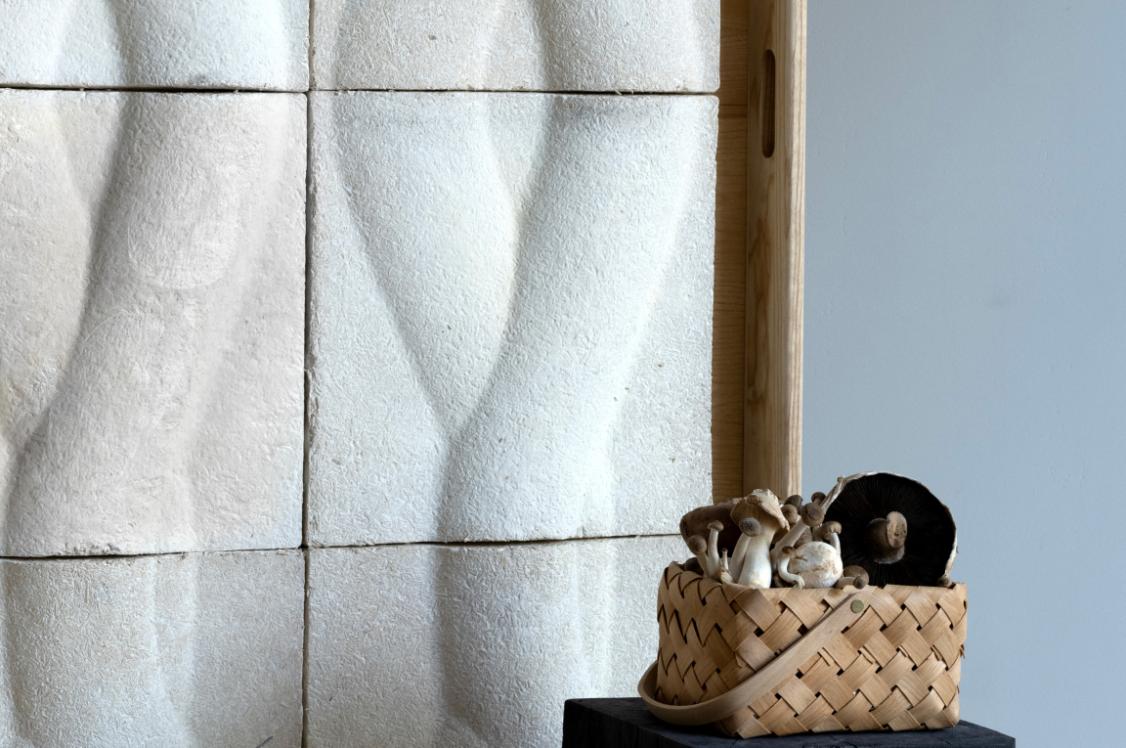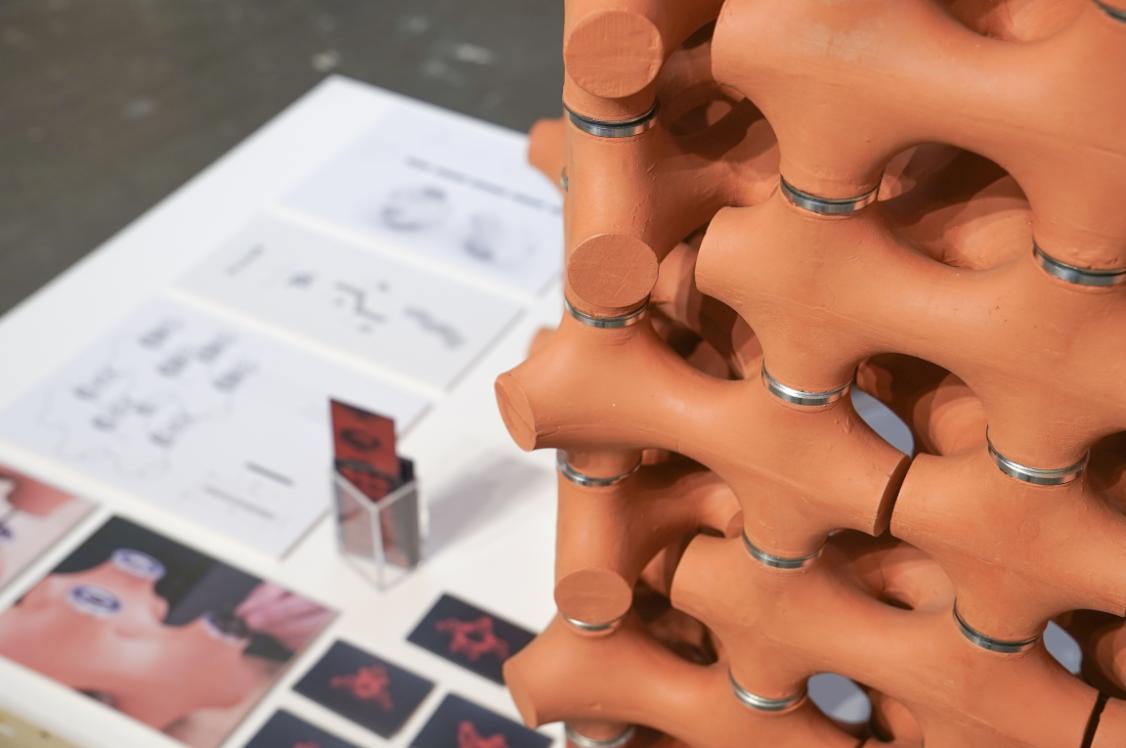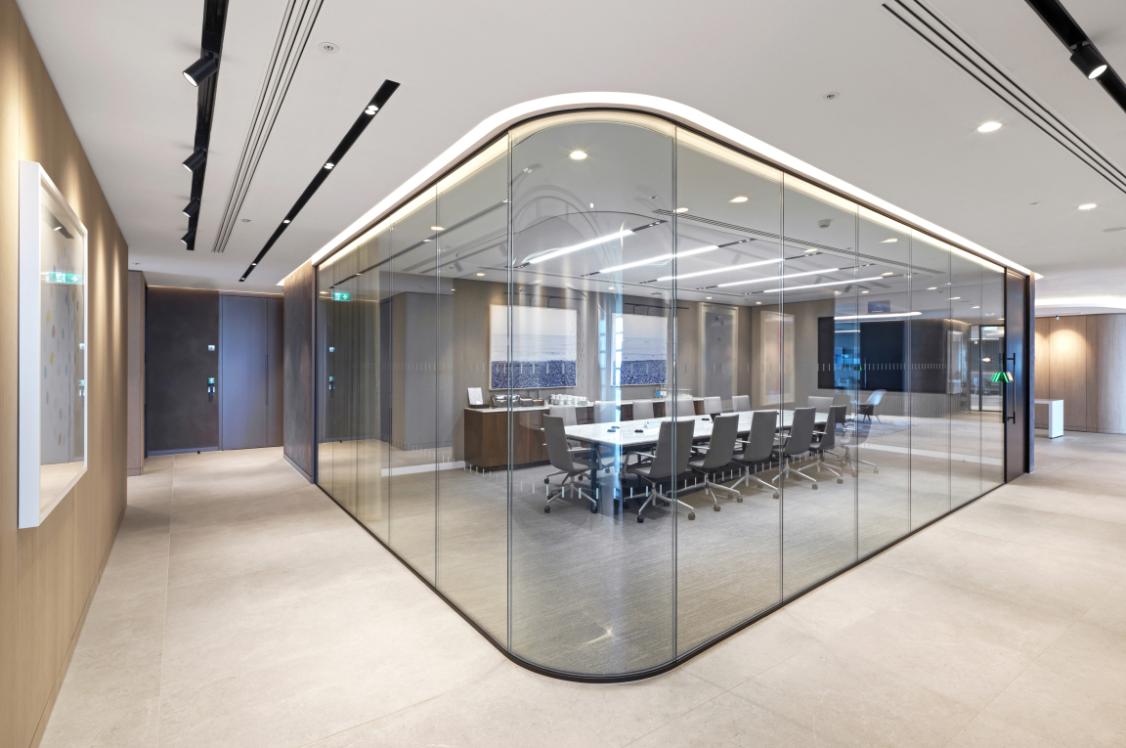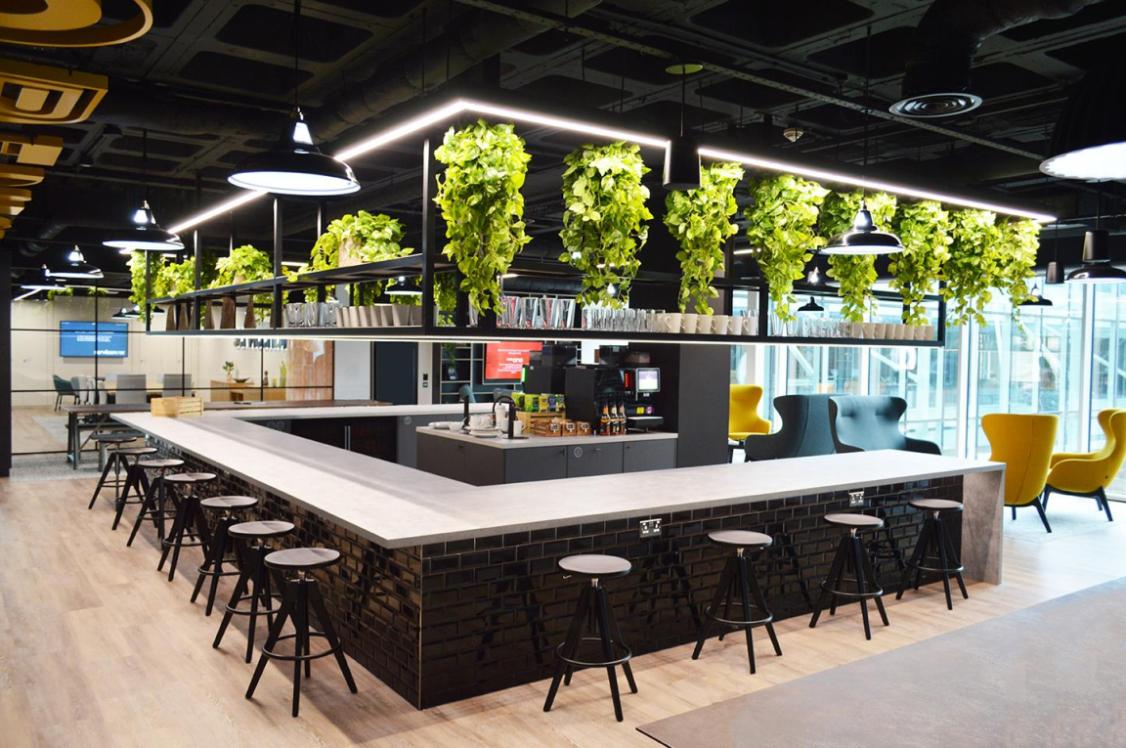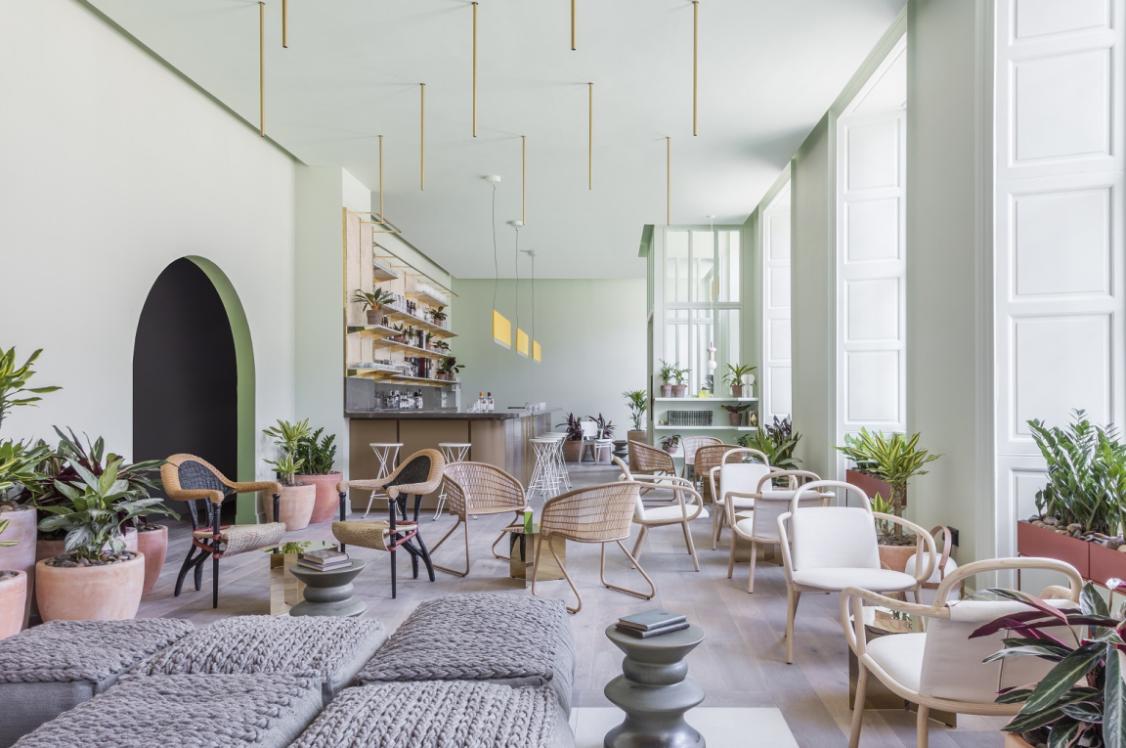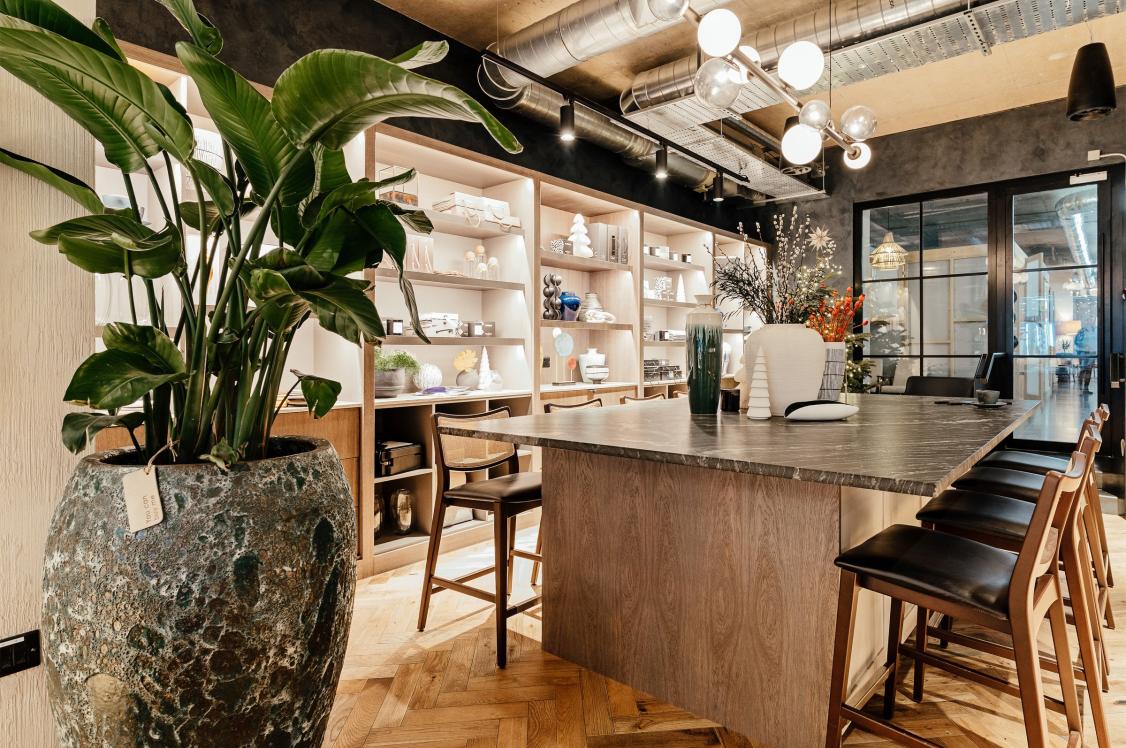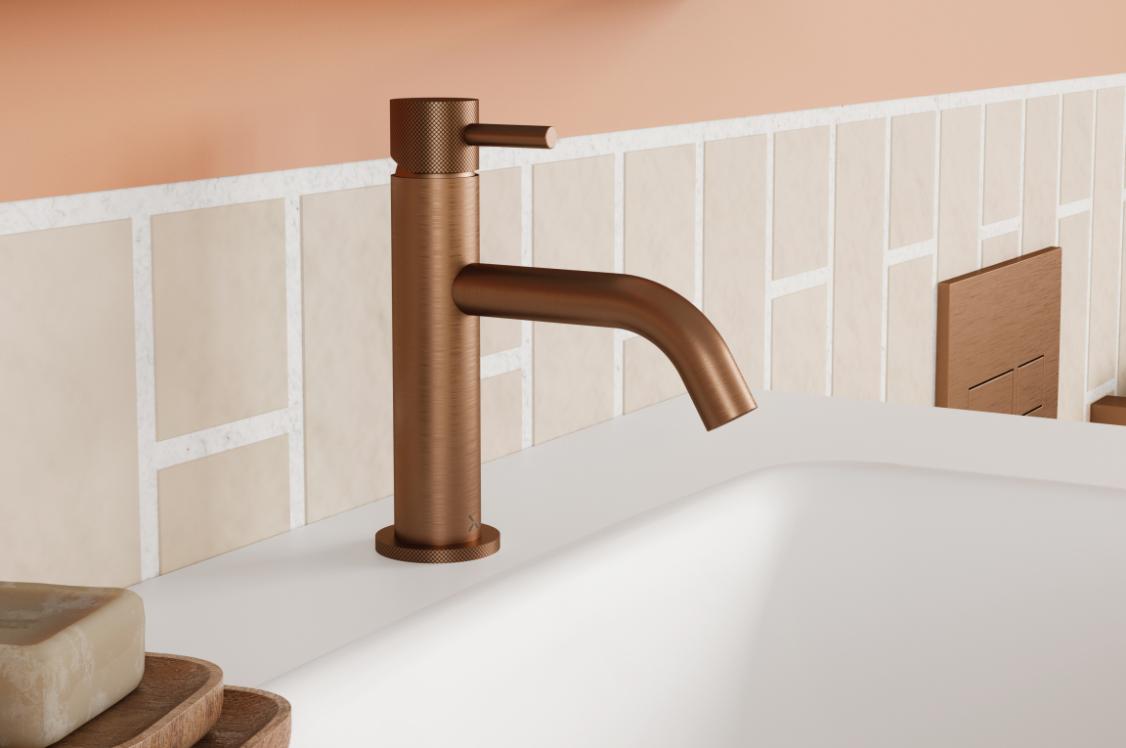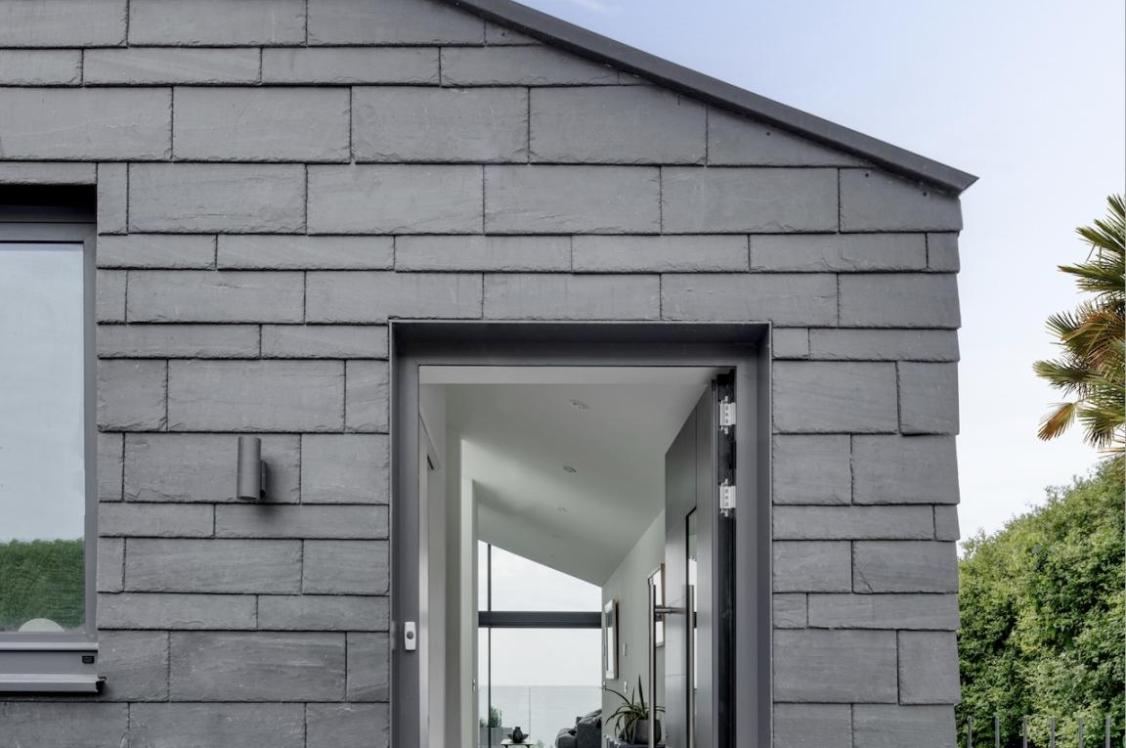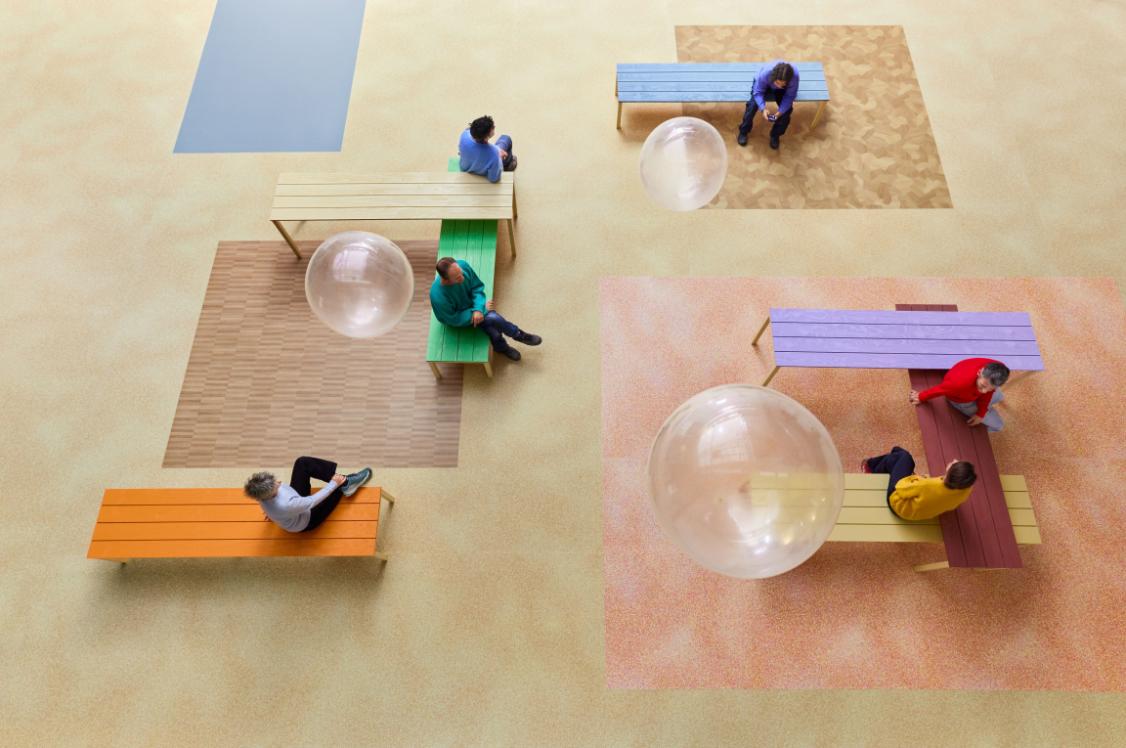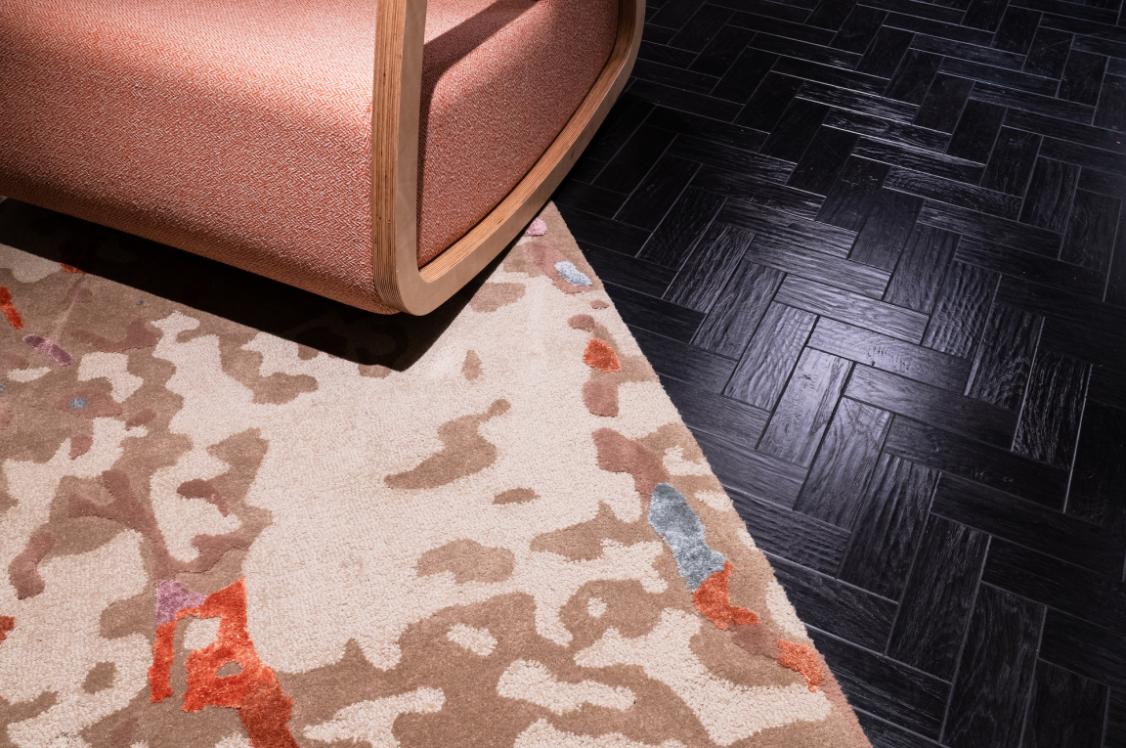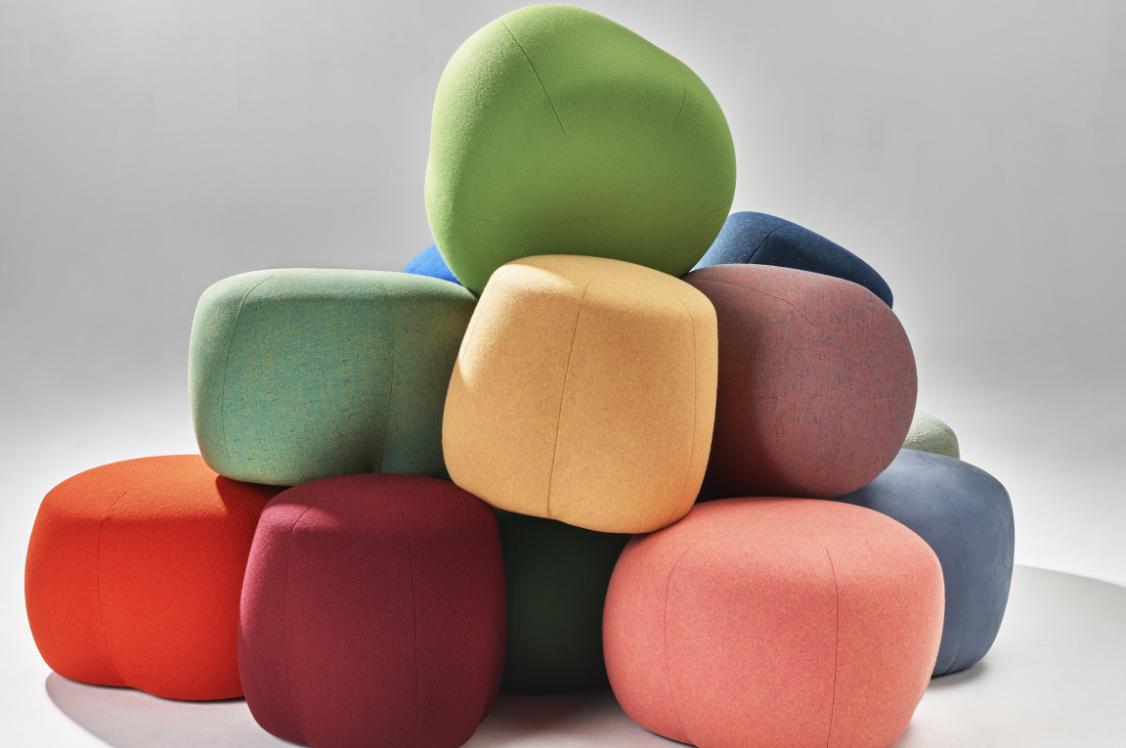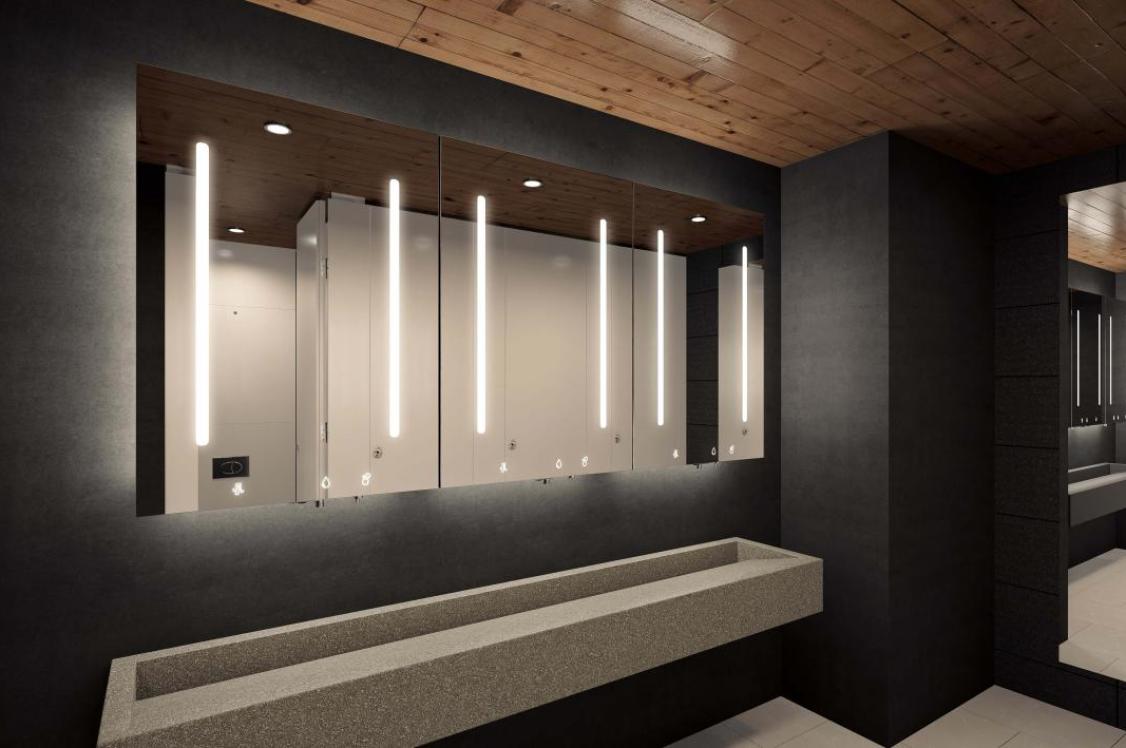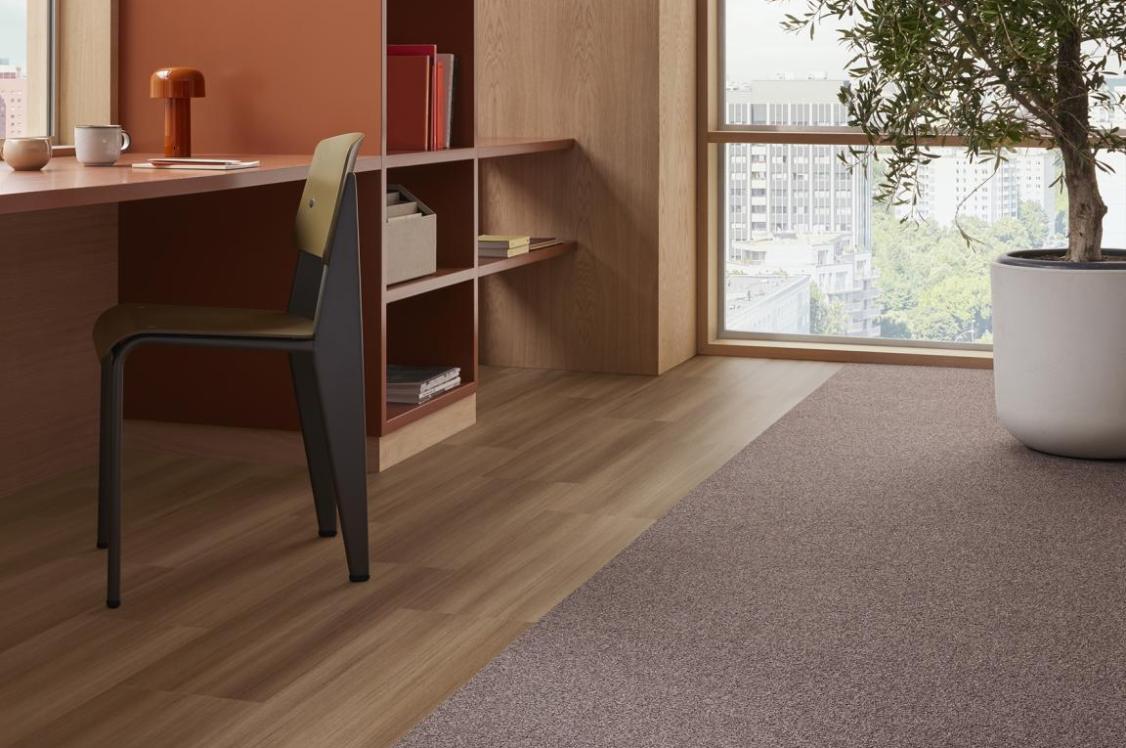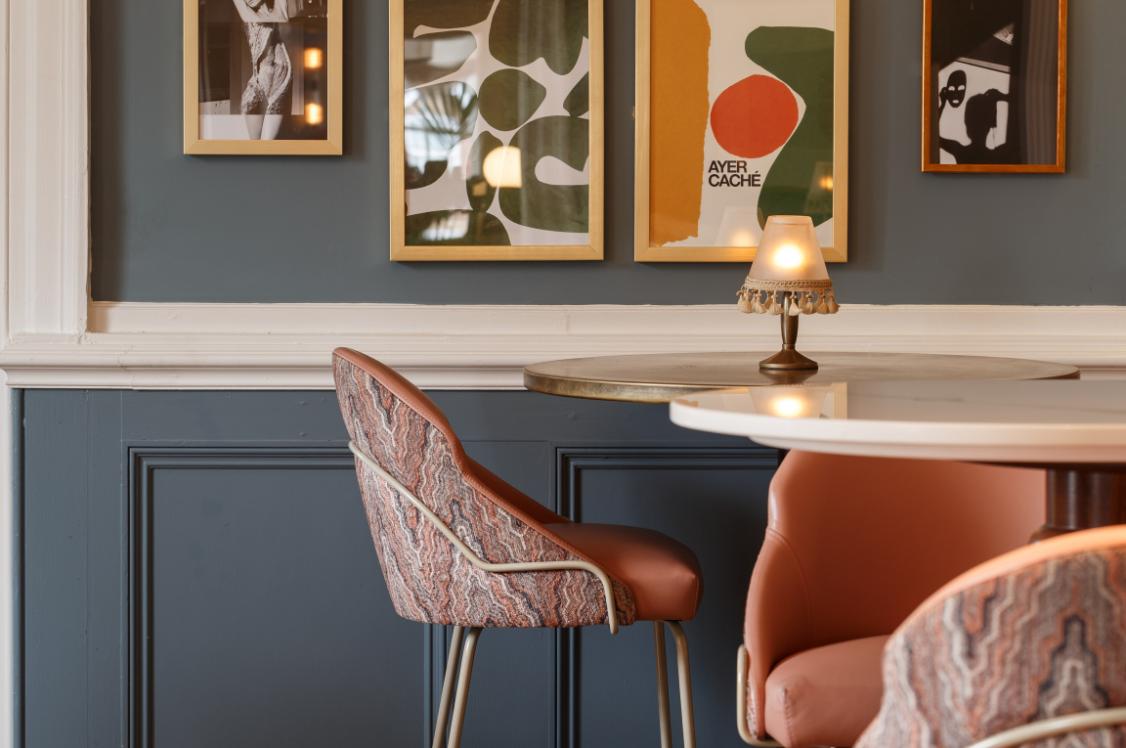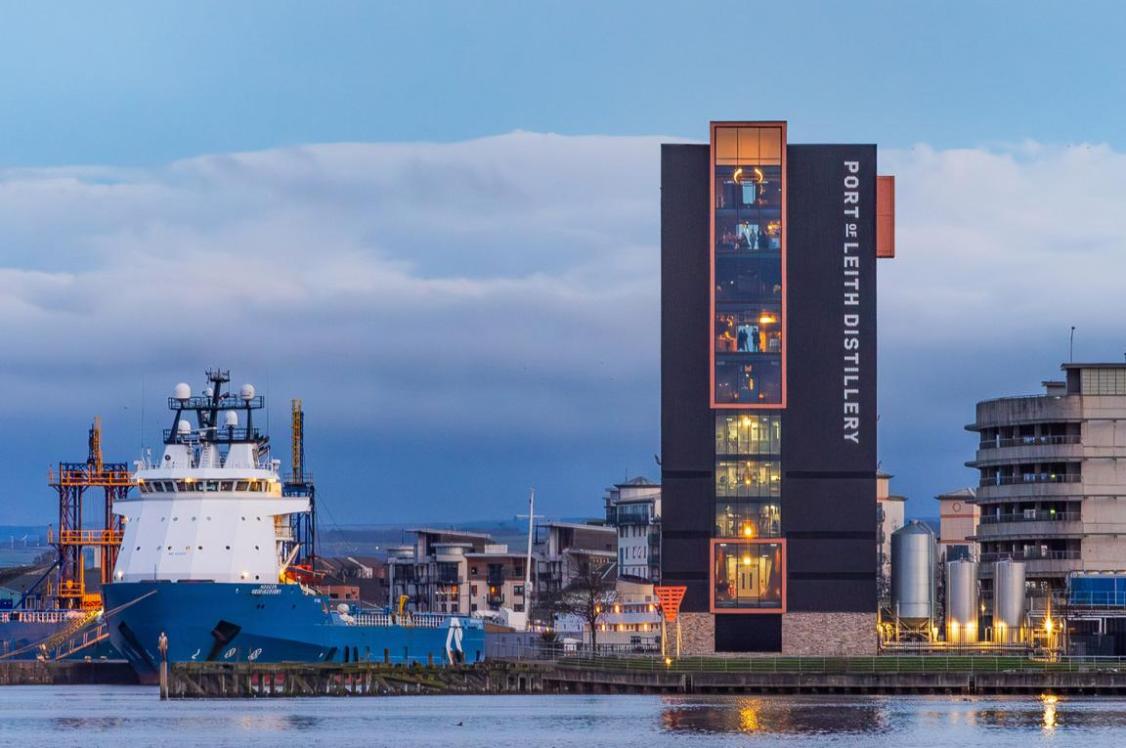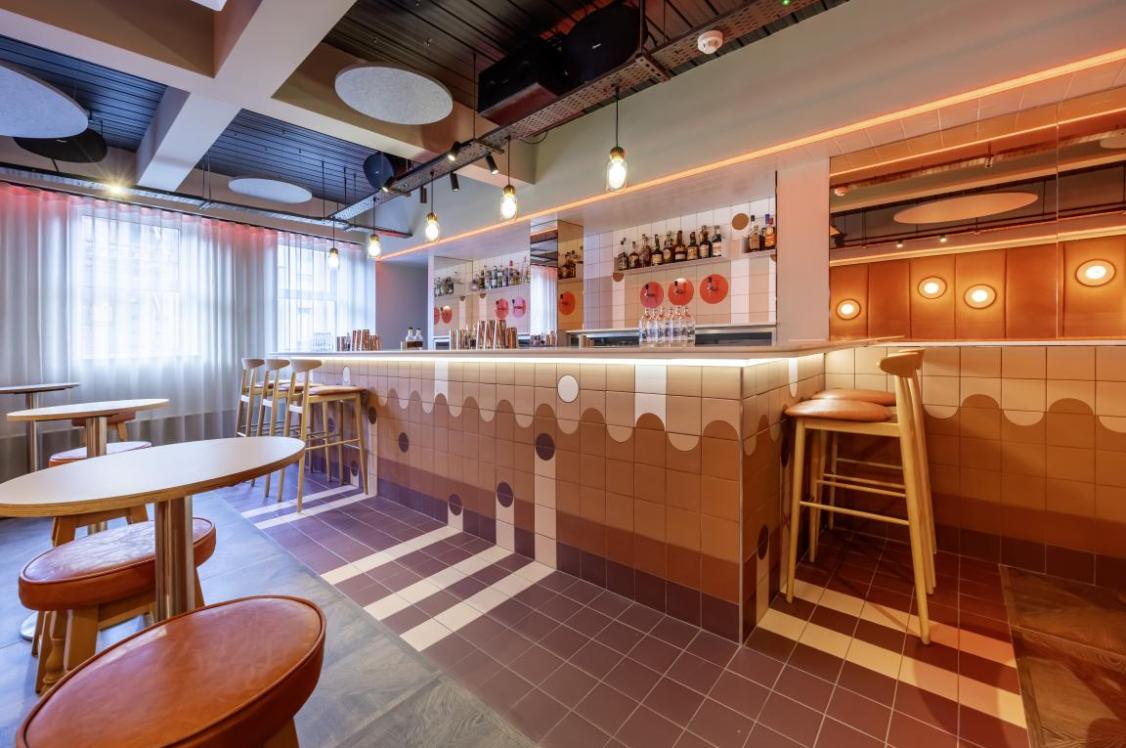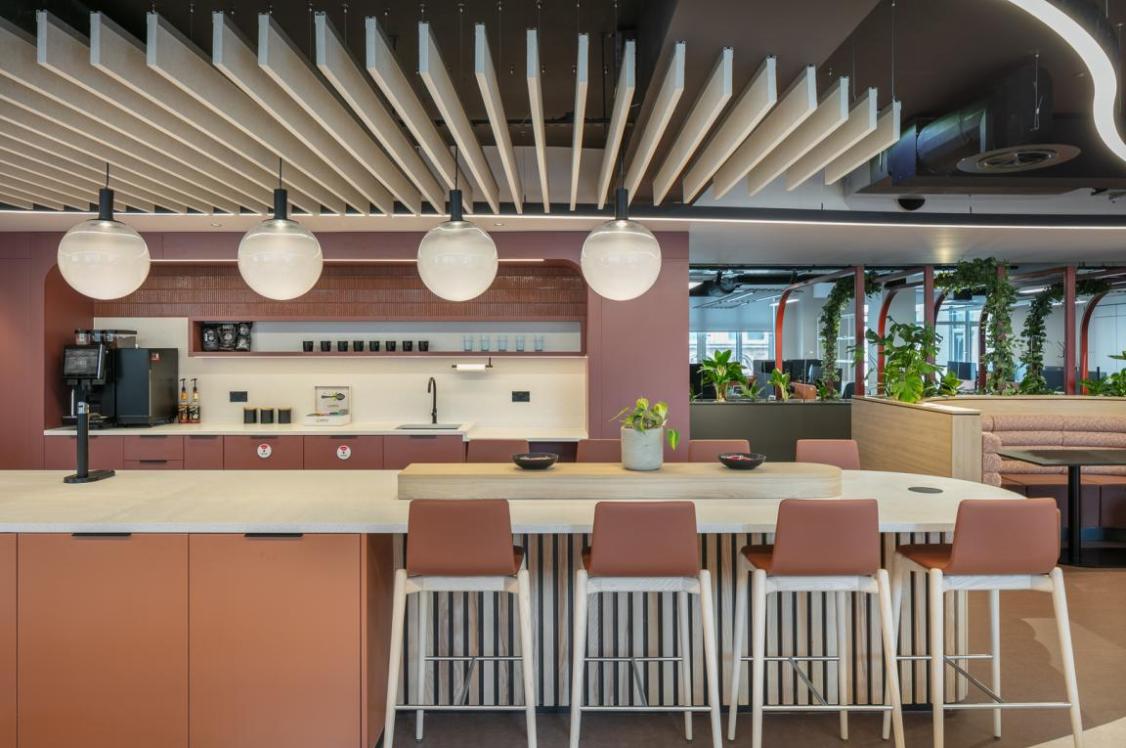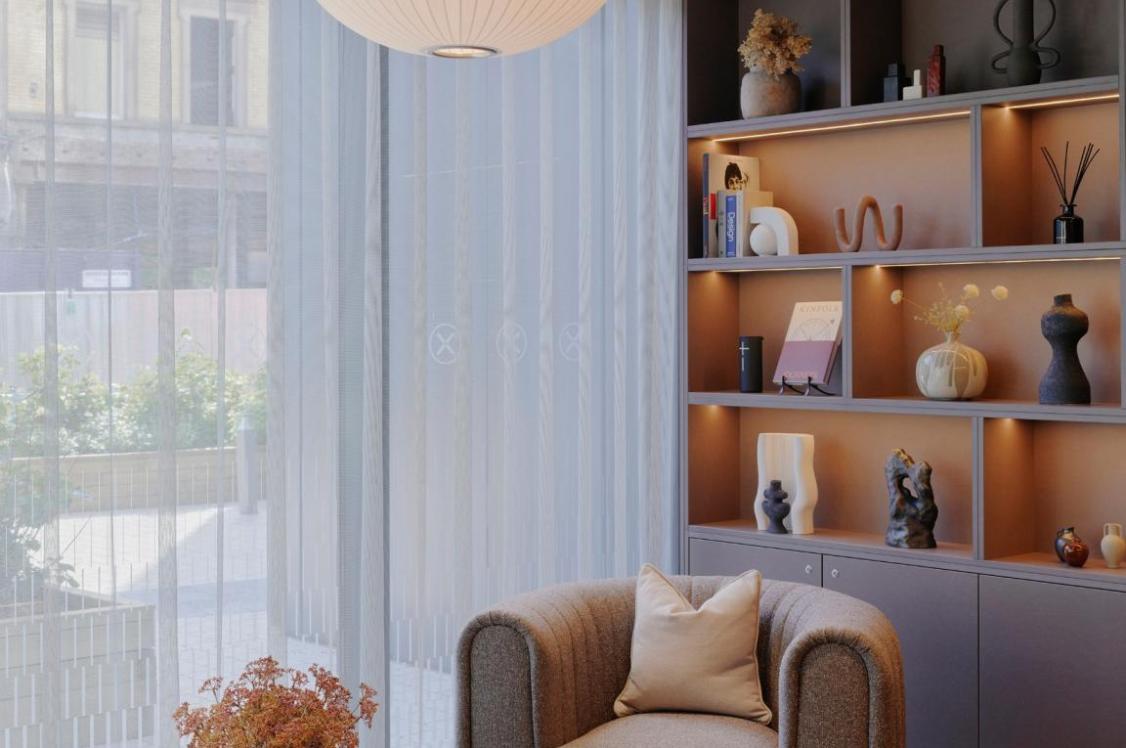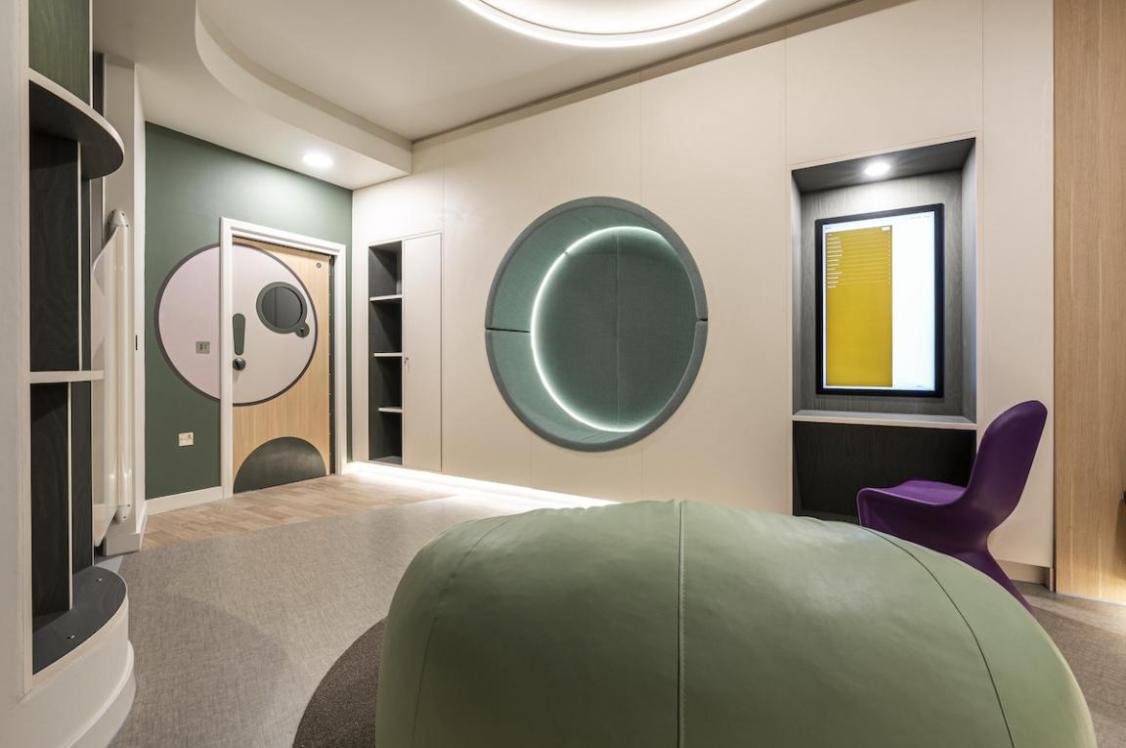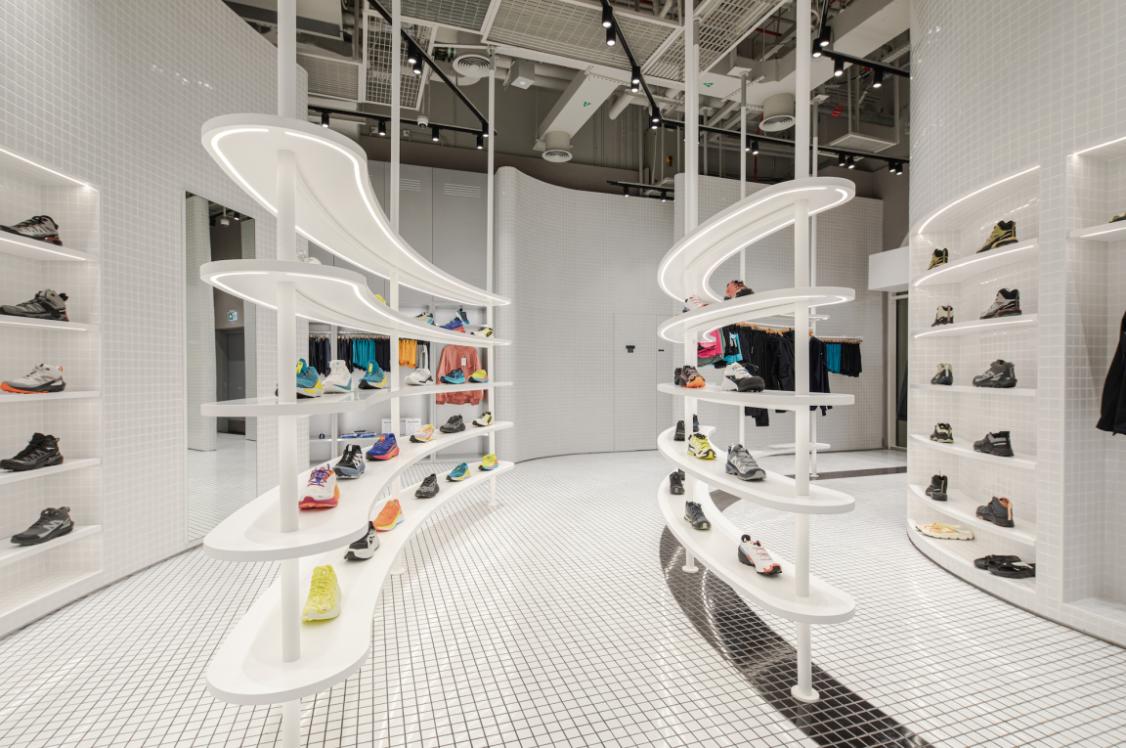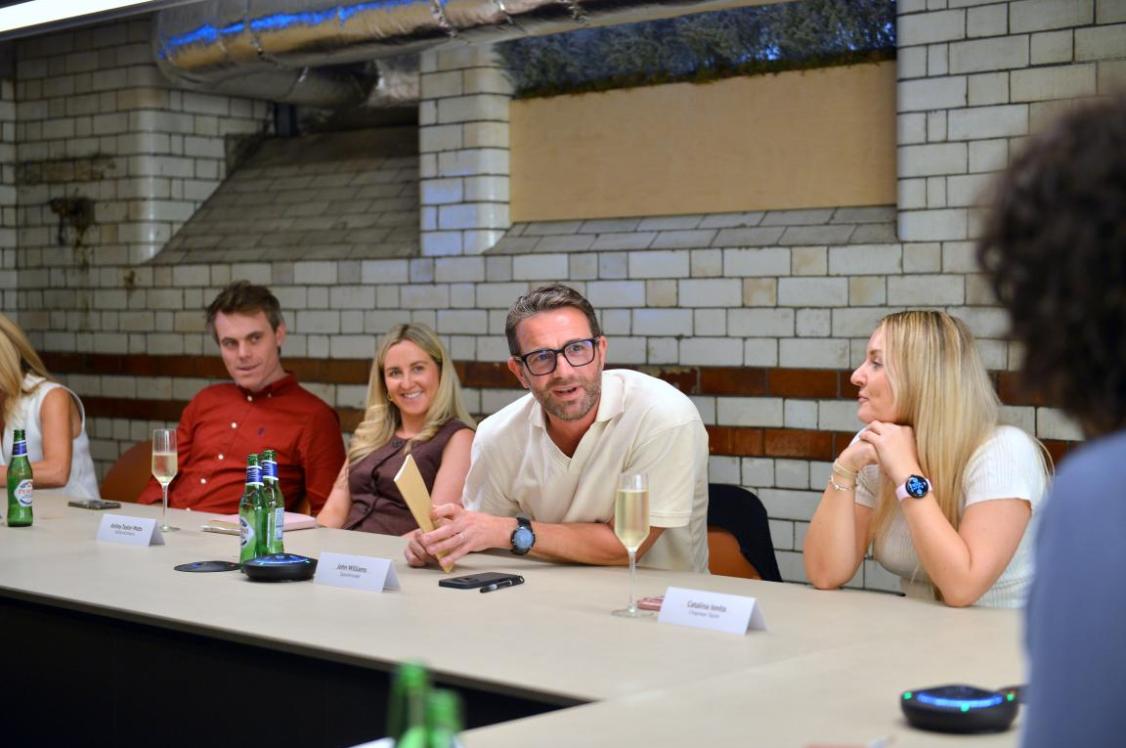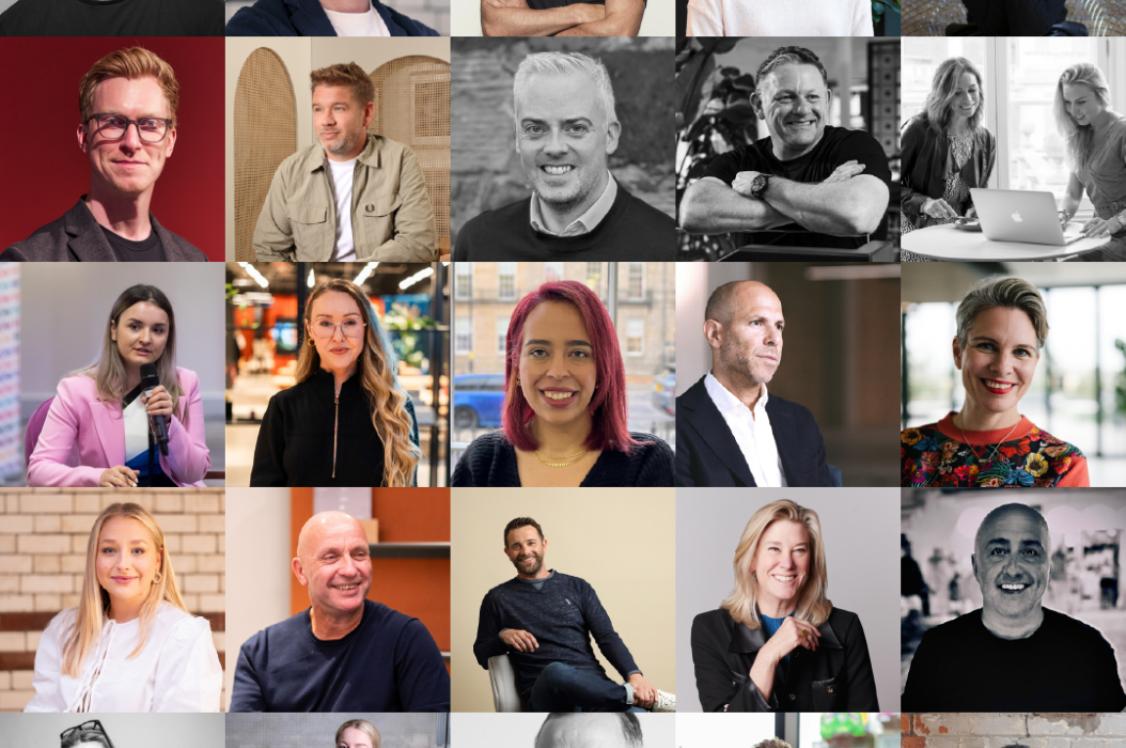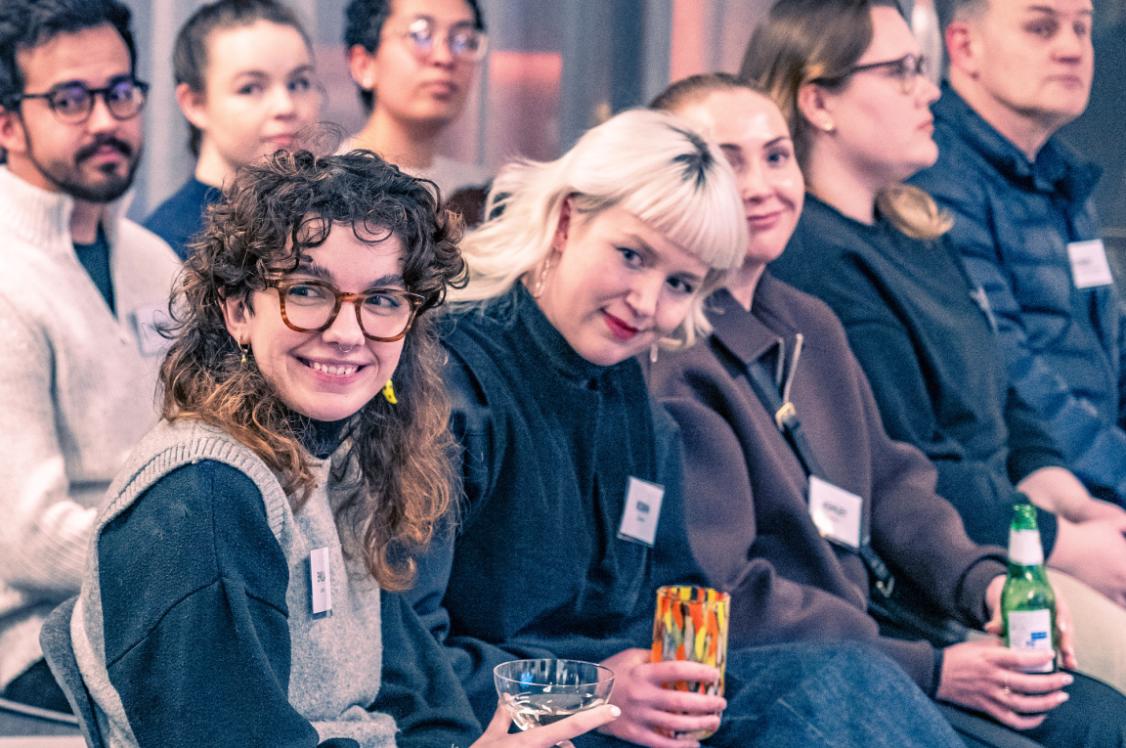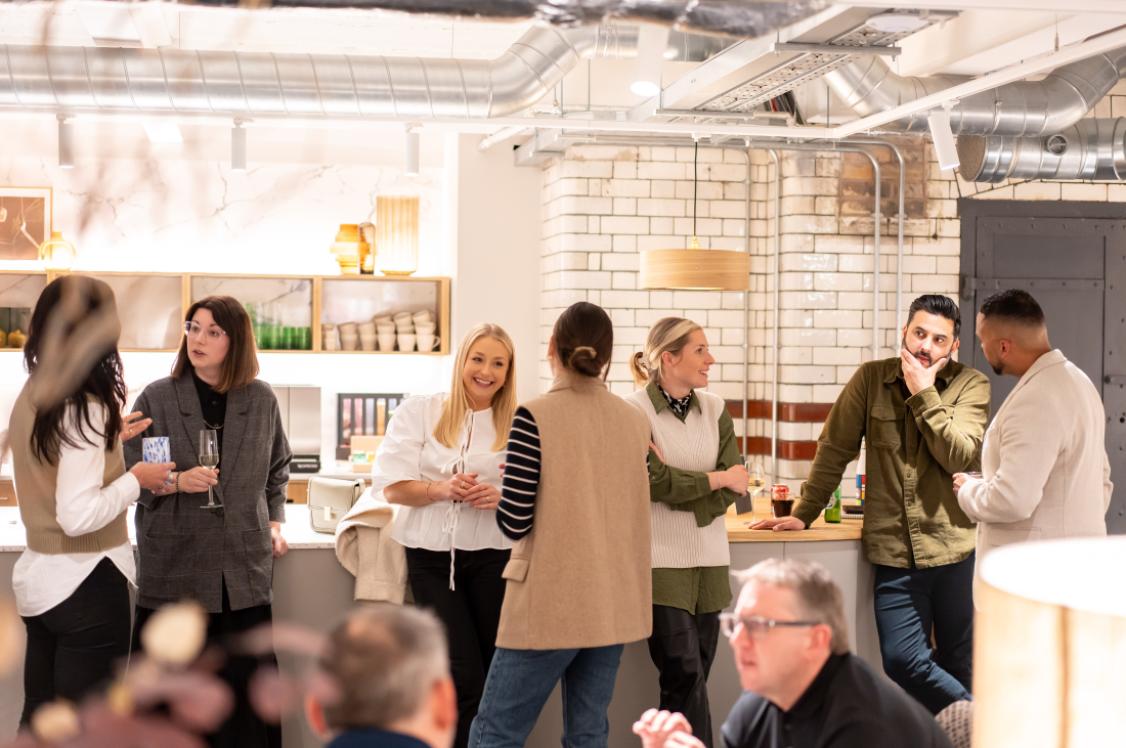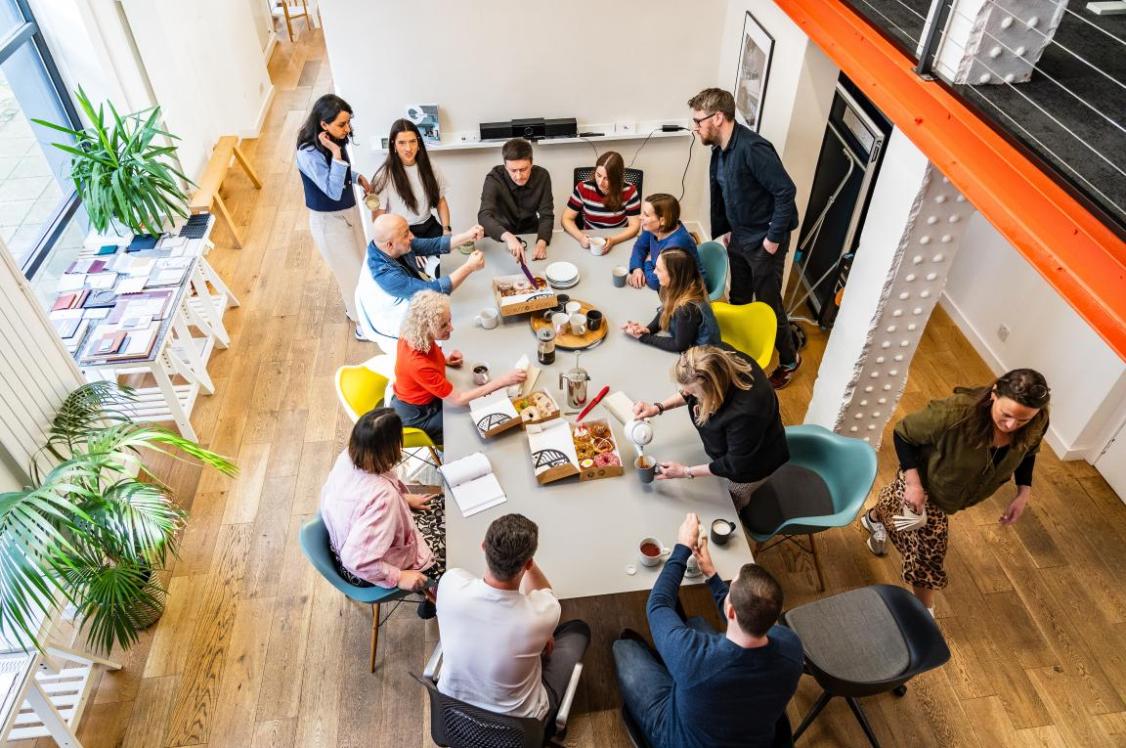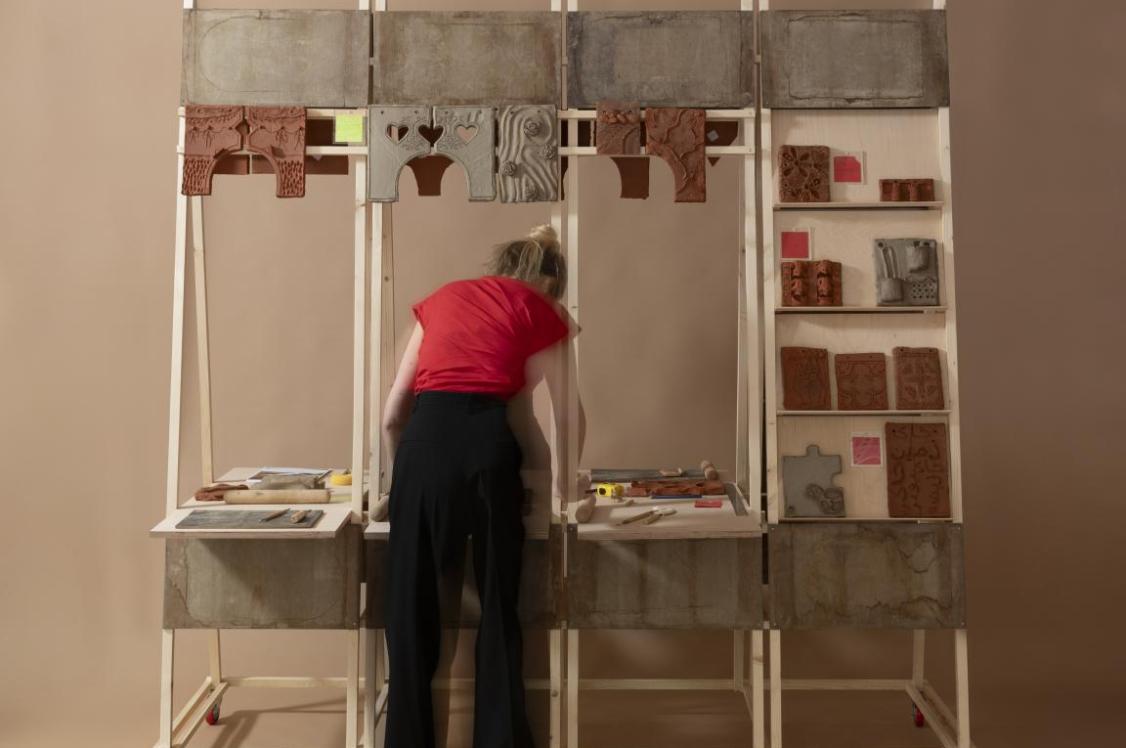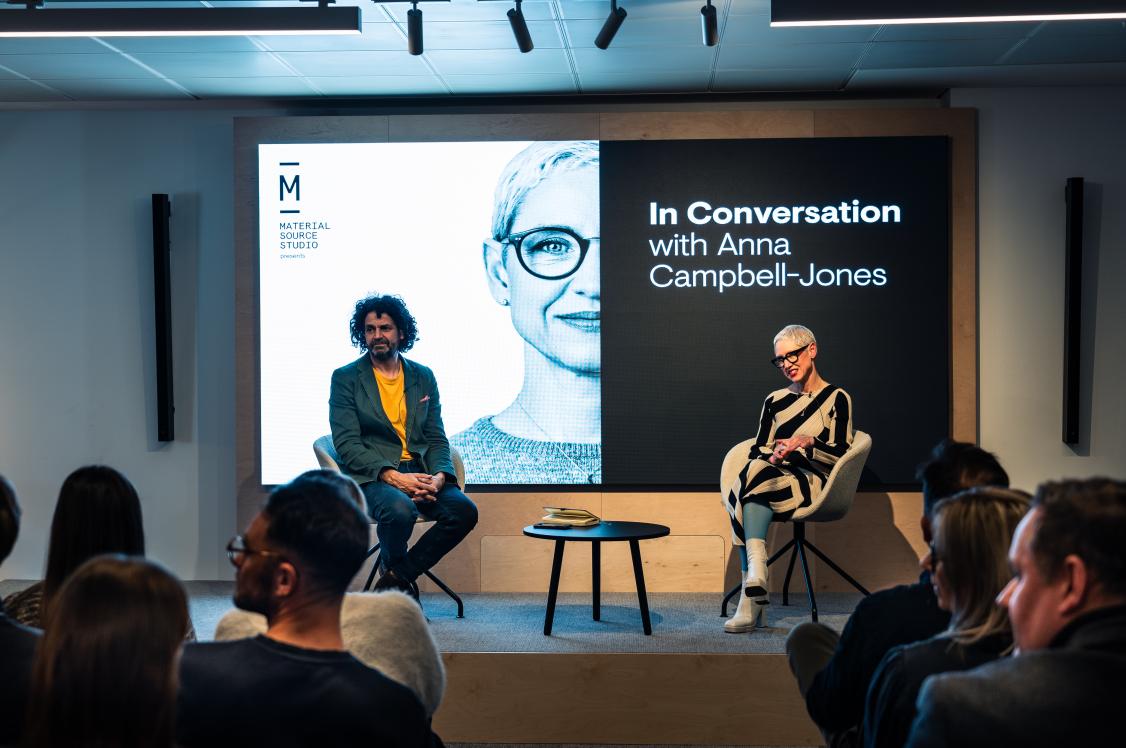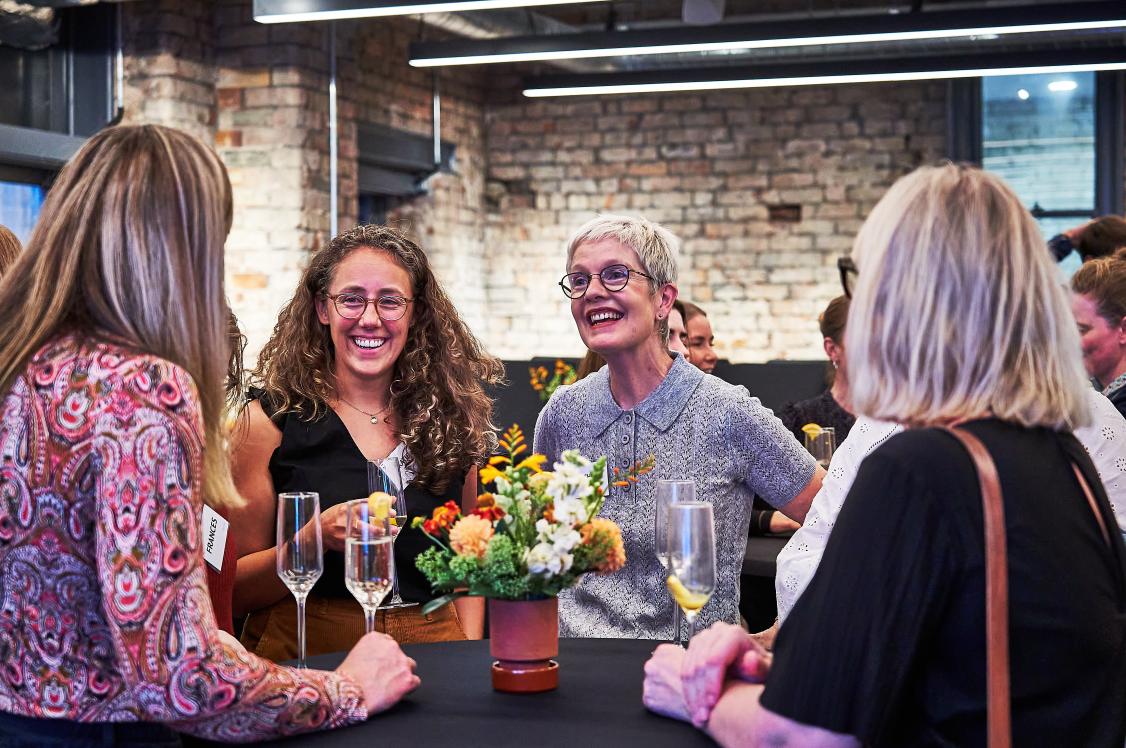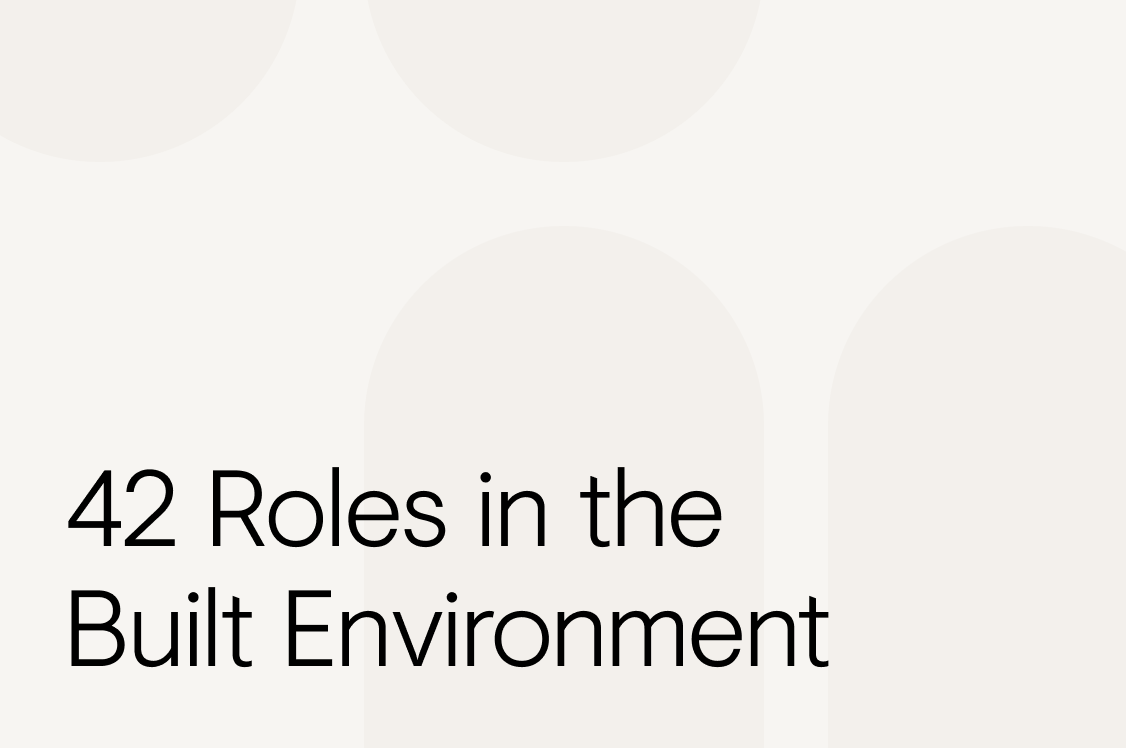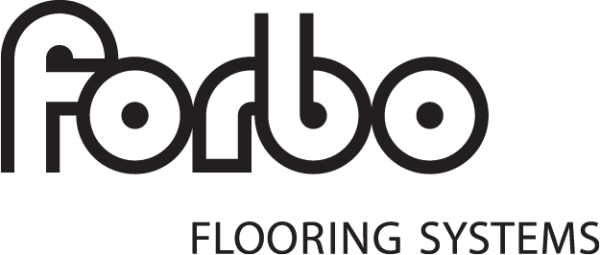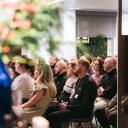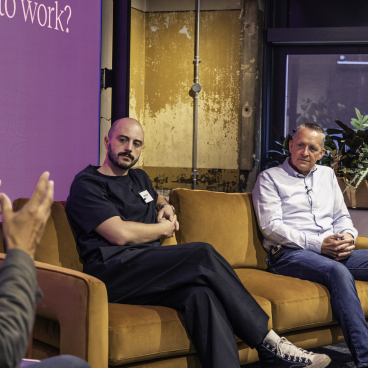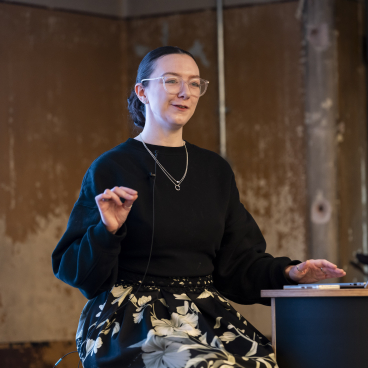Material Source Studio Asks: How is data impacting workplace?
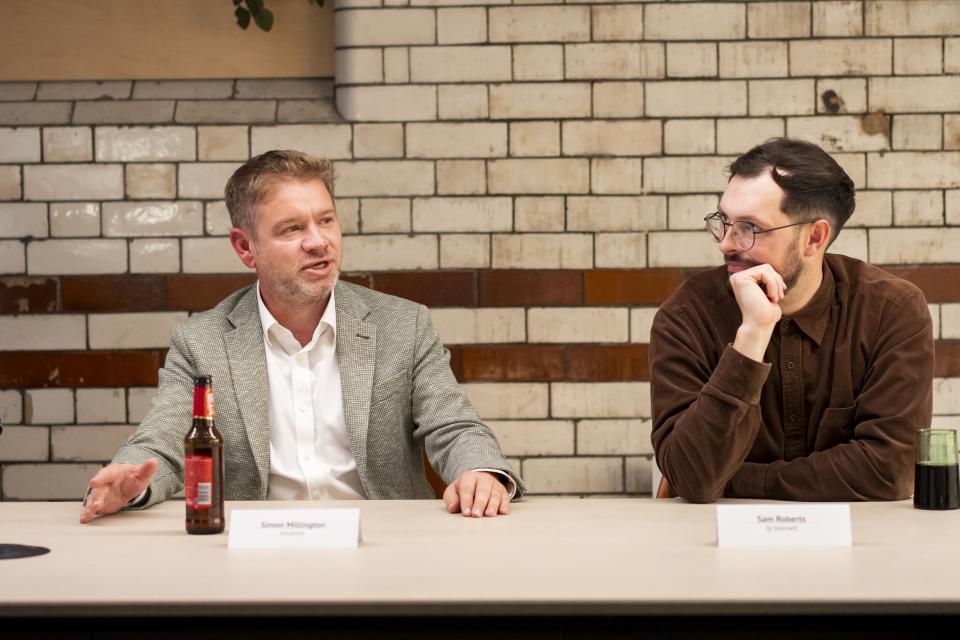
Continuing the conversation around technology and its impact on workplace, we brought together a group of senior, well-placed industry professionals to discuss the crucial topic of data.
The point that perhaps came through strongest was that while data is a clear driving force for designers at the start of a project, when it comes to clients commissioning post-occupancy studies - to truly understand impact and establish new pathways for ongoing improvement - it's only a handful partaking.
We arguably now have access to more data than ever before, but if it’s not being analysed, or presented back in a digestible way, it becomes overwhelming, and ultimately, useless.
Probing into this, through themes including the tools for data capture – from sensors to surveys, the potential of digital twins, wellbeing, ethics, occupancy patterns, and the knock-on for leases, a collective of unique perspectives culminated in a fascinating debate chaired by Material Source director, David Smalley. Read on to establish where we are now. And, where we could be headed…
Our guests

Simon Millington, founder & director, Incognito

Stephanie Porfyriou, project architect, AtkinsRéalis

Sam Roberts, BIM manager, tp bennett

Darius Baniabassian, director of design north, CBRE Design Collective

Janet Fearnhead, account manager, Forbo Flooring Systems

Ian Chapman, director, Corstorphine & Wright
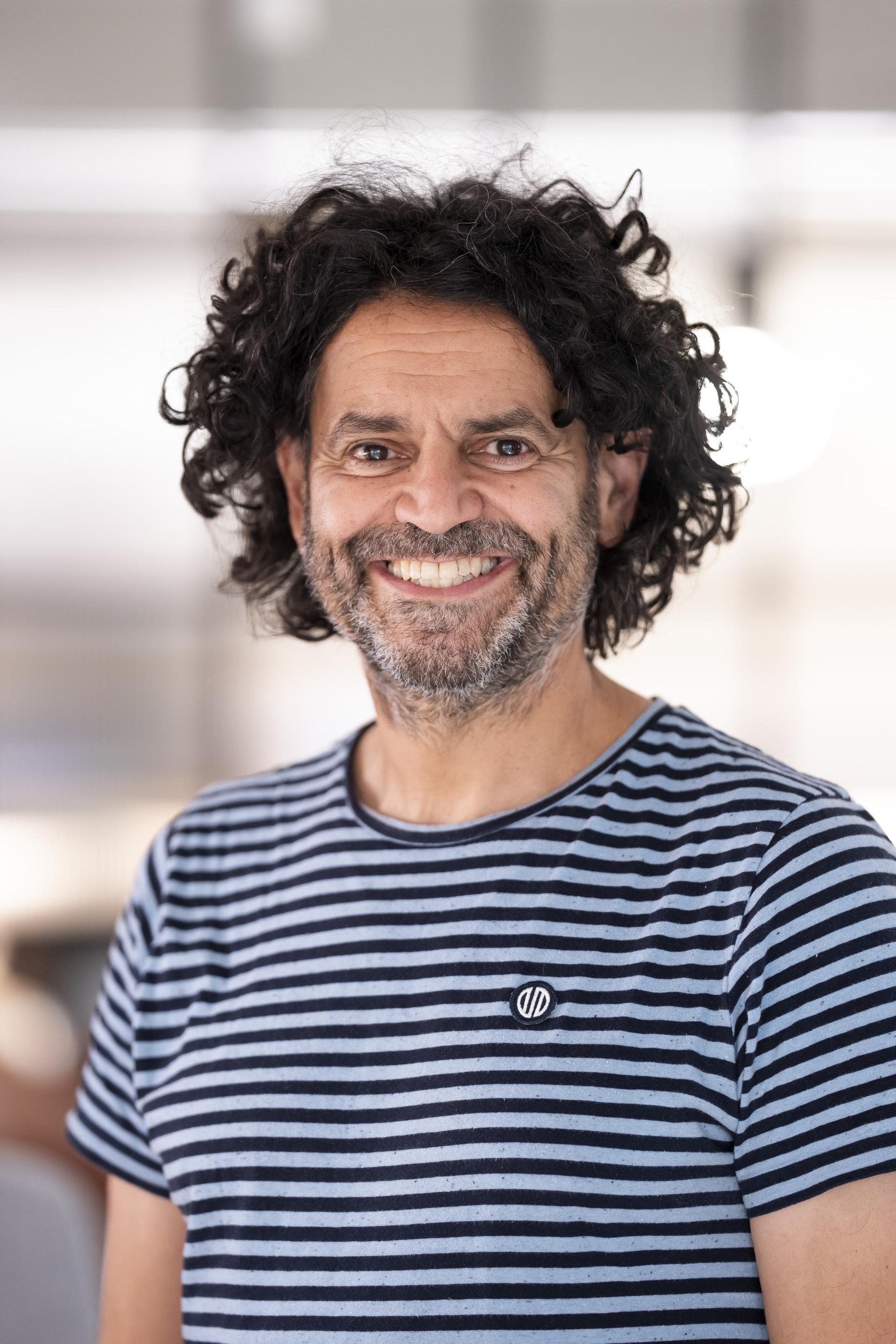
David Smalley, director, Material Source
Data – how important is it? And who to?
To establish where everyone is with clients on their data journey, currently, David asked guests to provide a snapshot of their projects.
Stephanie Porfyriou, project architect, AtkinsRéalis, kicked off. “I believe the role of architects and designers is to create buildings and spaces that improve peoples’ lives. So to be able to place people and wellbeing at the centre of the design, we need to understand the relationship between them and their environment.” This has spurred the creation of the Research and Innovation department at AtkinsRealis, where a set of digital tools have been crafted to generate its ‘human centred design approach’. More information can be found here.
“It gives us a deeper insight than any other traditional engagement method would. And it helps us build the optimum building specification or spatial design.”
This has informed the practice’s current project with the Government Property Agency on the Manchester Digital Campus – a location that will house 7,000 civil servants. Stephanie believes as the client has engaged from a data perspective from the start – an element of the project has included a daylight study, for example – design decisions will be improved as a result.
Six-months ago, Sam Roberts, BIM manager, tp bennett, began a collaborative project with Autodesk to develop digital twins. Though still in “its infancy”, a recent brief - also from Government Property Agency - marked the first time Sam had seen a digital twin aspiration. “It’s bubbling away with our London and Manchester offices set-up on there to demonstrate to clients the benefit. And we’ll be officially launching in the next couple of months.”
Ian Chapman, director, Corstorphine & Wright, is based in Manchester and works with six of the practice’s northern offices. As well as to drive development into the Middle East – where, he says, “data collection is embryonic”. In a scheme for ATG in Bristol, UK, though, data is critical to the brief around increasing venue visitor spend – currently much lower than it could be due to logistical challenges. “The money people spend either side of their ticket can make or break a venue”, Ian commented.
“We’ve collected a lot of data at the theatre over the last six-months, and we’ve plotted where the pinch points are to design out all the issues. People are currently choosing whether to queue at the bar, or queue for the toilets. They don’t have time to do both.”
Simon Millington is founder & director at Incognito, an interior design studio with workplace consultancy expertise – something he refers to as “inside out architecture”. The team looks at occupancy pattern, and aspired occupancy pattern, in line with business growth and change management models. Data underpins this, but not just quantitative – qualitative too. “We very much look at the culture and emotions that come through, and we probe into that data to understand why people are answering in that way. We then flip that into the design to make sure everyone has the right level of space, but also, providing room to grow.”
This process is followed right through to post-occupancy so project performance can be measured, but also course correction can happen if needed. Simon believes there is also another aspect of the data to be considered, and that’s to benefit from a sustainability perspective. This could be as simple as cross-referencing the number of desk bookings with the number of sausages needed for breakfast. Or shutting off a floor on Mondays and Fridays when it’s quieter. “It’s looking at how we reduce waste.”
There are several golden threads running through projects, and data is a crucial one – Simon Millington, Incognito
Darius Baniabassian, director of design north, CBRE Design Collective – a brand-new UK segment of a global team of 550 designers working on CBRE projects around the world – highlighted an internal project at Henrietta House as having data at the core of its design. “It’s been designed around data and how it’s gathered to ensure efficiencies in terms of how the building’s run, and how the teams are managed.” Data is collected in two ways: hardware, through ceiling sensors – as opposed to sensors under desks, which could be obtrusive – and the movement of people. It goes through to catering, building and facilities management.
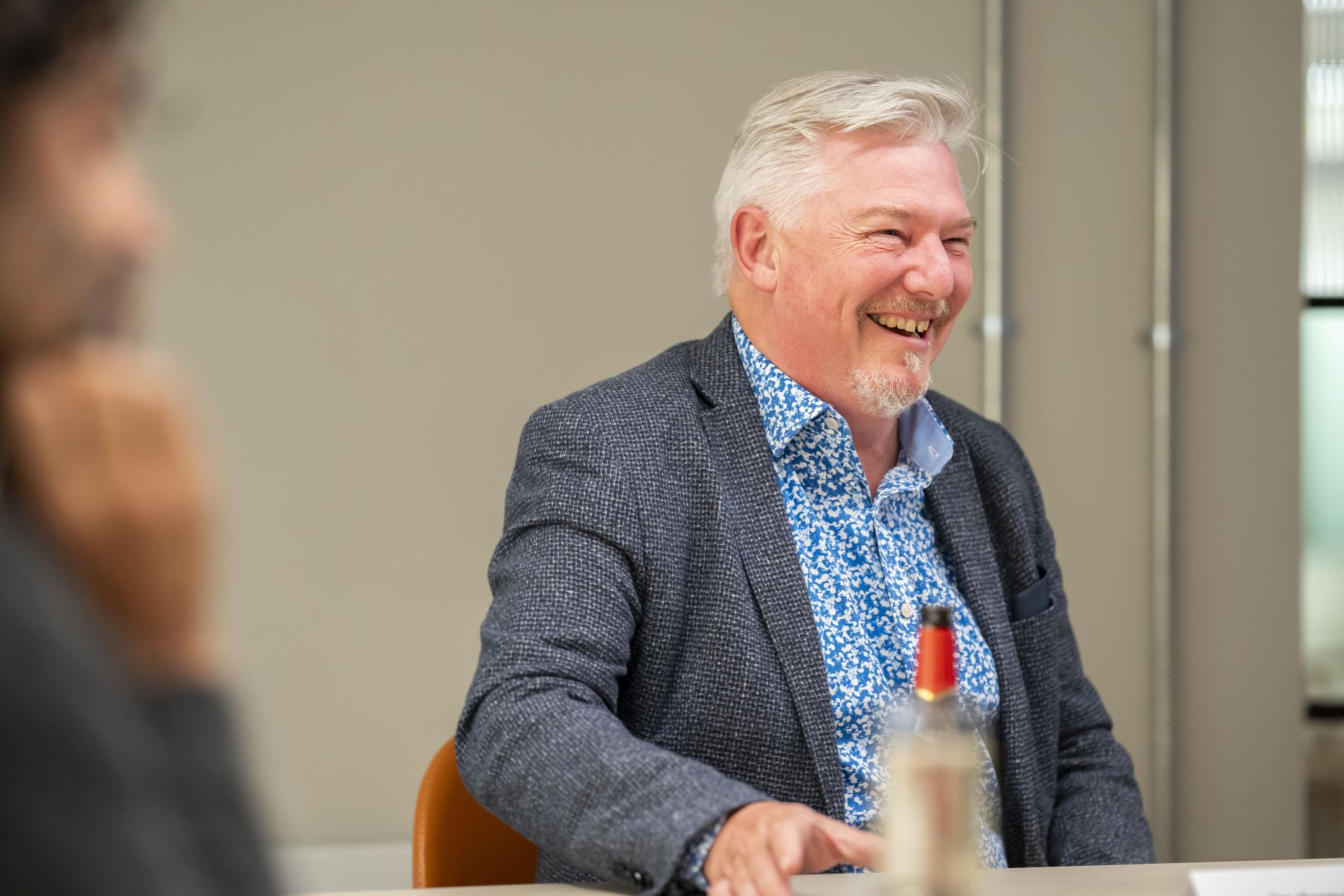
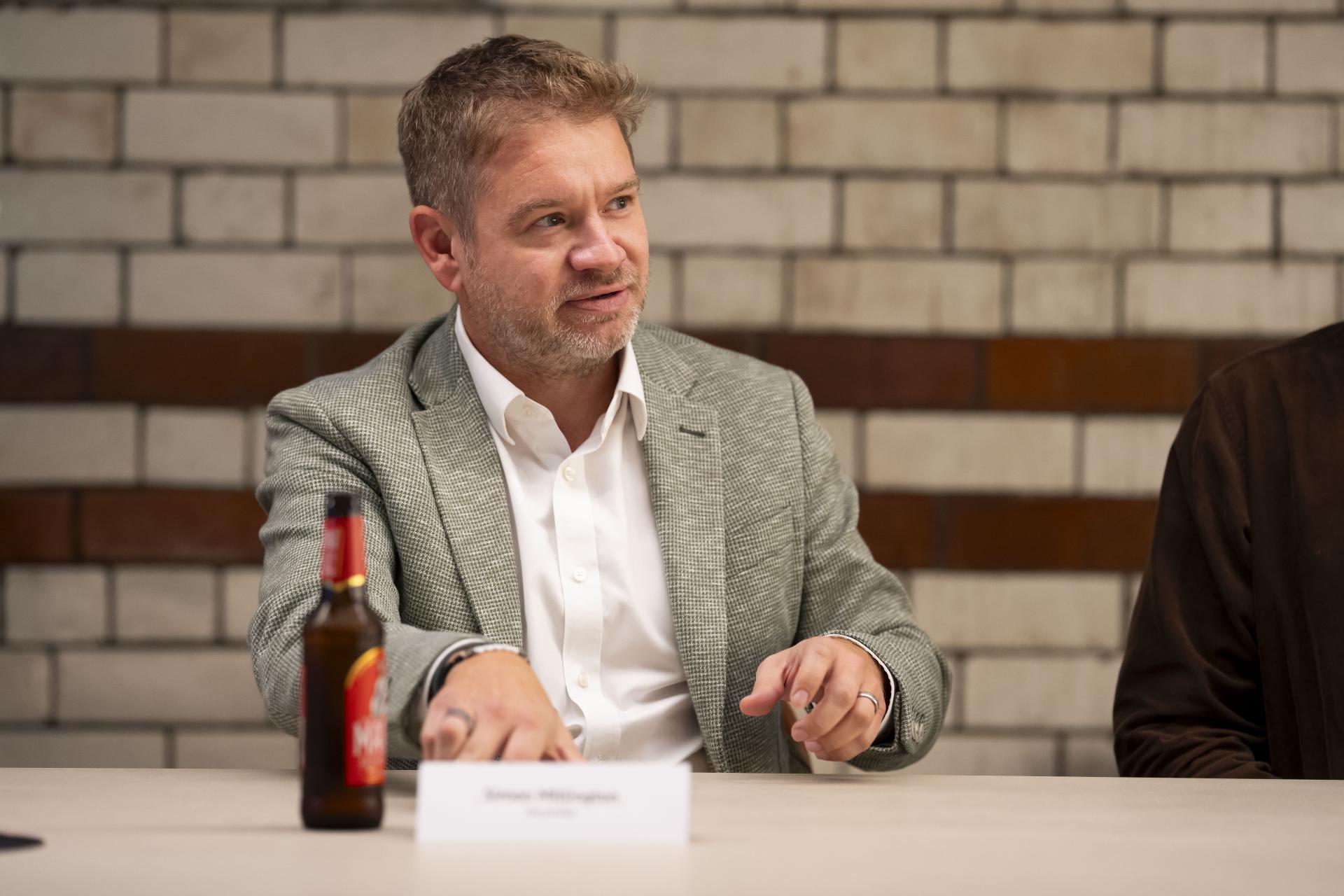
Courage and cost
“The sense is it’s exciting”, said David. “This whole subject is. Because even looking back five-years, there was perhaps the feeling that when handing over a scheme it’d be ‘here’s your keys, off you go’. And that seems a preposterous idea, doesn’t it? The fundamental relationship between designers, architects and clients has changed.”
“It has changed”, agreed Simon, “and there’s not many places to hide. We’ve probably all had clients at some point that have said ‘we want to do it this way, because I believe it should be done this way’. You say, ‘that would be a courageous thing to do’, then you guide them to properly engage with people and communicate that, this way, they’ve got a much better chance of success because the space is useful. And with the cost of things as they are, it has to be right.”
“Courage is a great way to put clients off something!” commented Ian. “You can use data for a different relationship with a contractor as well”, he continued. “Way back in 2016, we did a scheme in Muscat where the Revit models were transferred into the contractor’s system. We had 3D images which told you where anything was built in sequence, or if anything was being redone because of an error, and GPS monitors told you if anything was out of place on the day it was fitted. Any issues could be identified and corrected overnight. I’ve never done a job here in the UK like that – because of the cost. But there’s huge benefit in paying for data analysis upfront.”
Plenty of nods from around the table, and a comment of “incredible” illustrated this instance of embracing data integration from the off is both unusual, and, as such, inspiring.
It’s an industry aspiration to get to this level of data sophistication - Darius Baniabassian, CBRE
Darius suggested that in a different sense, this client was also “courageous” – wanting to secure the very best outcomes. Ian said that was exactly the case – the client wanted the best performing building in terms of sustainability, and a way to prove it. Data being the solution. As Simon had said previously, it allows no place to hide.

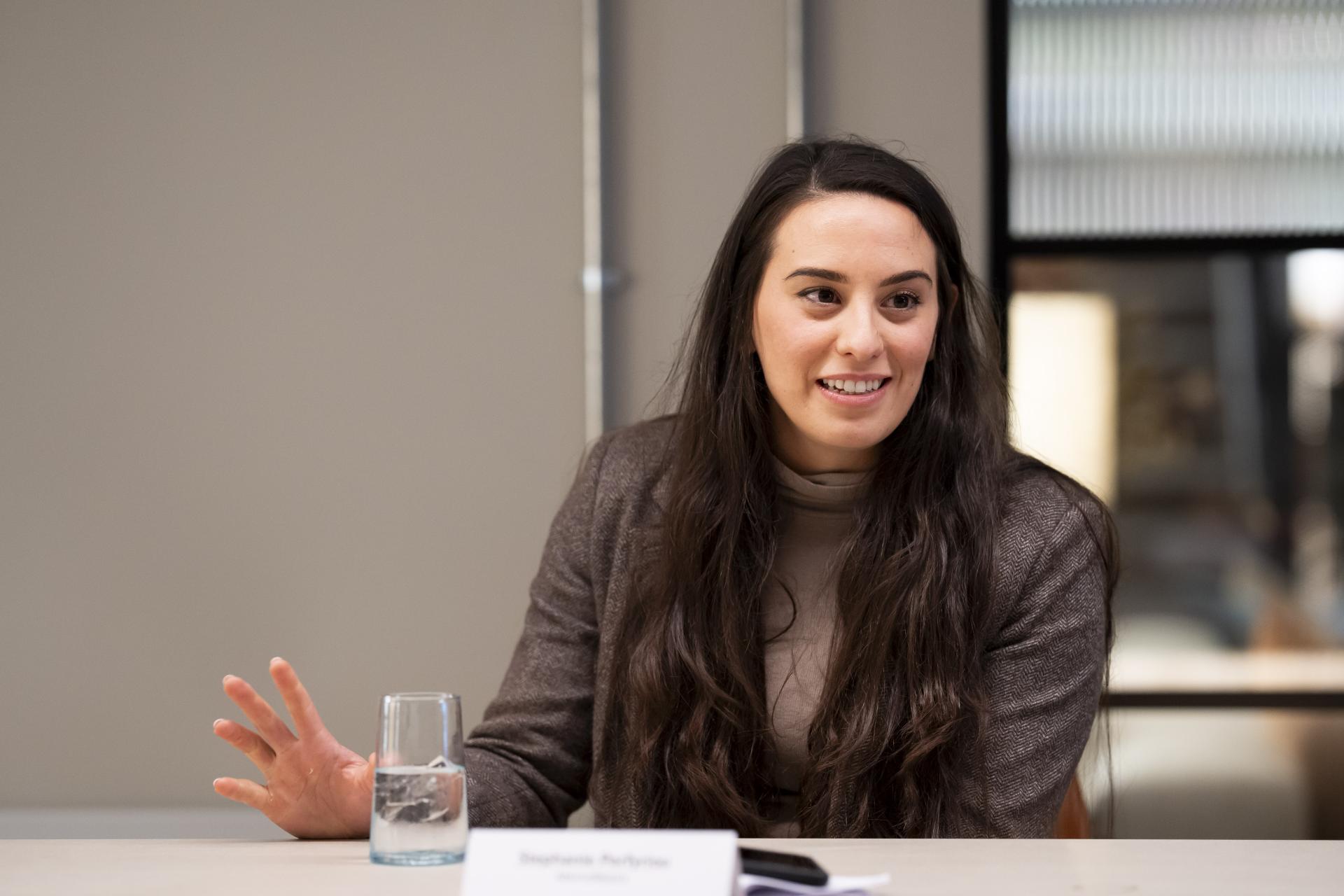
Data collection
Sensors
After getting a measure on how widely data is embraced by clients, David drew the focus to the process, starting with collection. He asked, “What is being used currently to collect data? And what’s being collected?”
Sensors, Simon shares, have become more common in fit outs completed in the last couple of years. And surveys are now more commonplace, though GDPR means they have to be conducted in-house. Where Incognito would support is through the creation of those surveys. “Gone are the days now where we physically go round and monitor which of the facilities are being used.”
Sam believes there’s a job to be done in justifying the cost of the sensors post-occupancy, so at tp bennett, the team is trying to stress how more value can be gained from any budget outlaid. “If they’re buying the hardware anyway, we can take it and implement into the existing office to do a pre-occupancy study to gather real insights.” This is mainly done for desk occupancy, and for measuring air and light quality with environmental sensors.
Skewing in data is obviously an issue, and one which Sam raised, particularly for those working off temperature. For desks located next to large windows, the sunshine can intervene!
Sensors don’t have to be invasive – they are getting smaller and smaller – Sam Roberts, tp bennett
“How widely are sensors being adopted by clients, then?” David asked.
“It depends”, replied Darius, “some clients don’t like the idea of something visible monitoring if someone is at a desk at all times. They don’t want the responsibility of having that information. It can be a can of worms in some ways.”
Ian brought up a point raised at the seminar the previous evening, where meeting room occupancy was being monitored to establish patterns around space usage. Simon suggested this type of technology hasn’t yet reached its potential. Something he’s experienced first-hand. “There’s an active need for one of my current clients to utilise that data to help their real estate function plug in. But because you have ‘closed’ systems in a building where that data can’t talk to other data, you can’t unlock the building’s potential where, for example, there aren’t enough people on a floor to justify opening up another floor.
“If you could join the data sets together with open source tech, you could really make smart buildings work much better. You could direct users around to make much better use of the space. But it doesn’t really exist yet.”
Or does it? “That’s what Autodesk is trying to do”, said Sam. “To see everything as agnostic within a platform. So, it wouldn’t matter if you were using building sensors or a desk sensor they would all link into one. And you could pull up a chart to compare MEP usage.”
“From a user experience point of view, that could be really powerful”, responded Simon, “because it knows that ‘you’ are there, if you allow that to happen, and your pre-sets could kick in – pink light on your face, or a lovely smell to be released in the future. If you think about that experiential journey all the data exists around us to do that. But because of these closed networks, it’s not that useful.”
Stephanie shared that AtkinsRealis has found sensors to be useful as one element of its research, however it's not always possible to incorporate due to client concerns around privacy and GDPR. "When that happens we use alternative methods to collect information with informed consent by the client as part of briefing, POE, utilisation and other study offerings. It shows key challenges with a clients’ current workspace and also what’s working well.”
"At the FCDO (Foreign Commonwealth Development Office), we carried out a utilisation / time-motion study to prepare the redesign of its offices. We physically observed how spaces were being used throughout the course of the week, and we used a briefing study, with multiple choice and open-ended questions. This was to get an idea of different stakeholder’s views versus the environmental quality of the space.
“Combining more subjective self-report perspectives with more objective observations we were able to get a more holistic view of the actual pain points of the end users of the workspace - including the things they don’t recognise for themselves."
The client found so much value in doing this, Stephanie shared, and it helped shape their investment decision.
Though not every sector can embrace sensors or surveys – even if it wanted to. The government being one example. “It’s a challenge”, Stephanie said.
Surveys
“Surveys have got to provide gold dust, haven’t they?” asked David. “Are they the best way to collect data about what people want?”
Simon thinks they can be, but it’s down to the process. A simple method of scoring being the best bet, with a free field to input something around that. “You can then probe into that data”, he suggested, to find out the reasons behind certain trends that have emerged. This would then follow through to more extensive interviews with department leads to establish the ‘why’. “We can’t expect AI to produce all the answers – there still needs to be that manual research – asking the questions, being curious.”
Stephanie shared that AtkinsRealis doesn't currently use AI to analyse client data partly due to privacy or security concerns, but it is something that can be experimented with in the future as it can add value through analysing text in the free form sections of surveys to pull out themes.
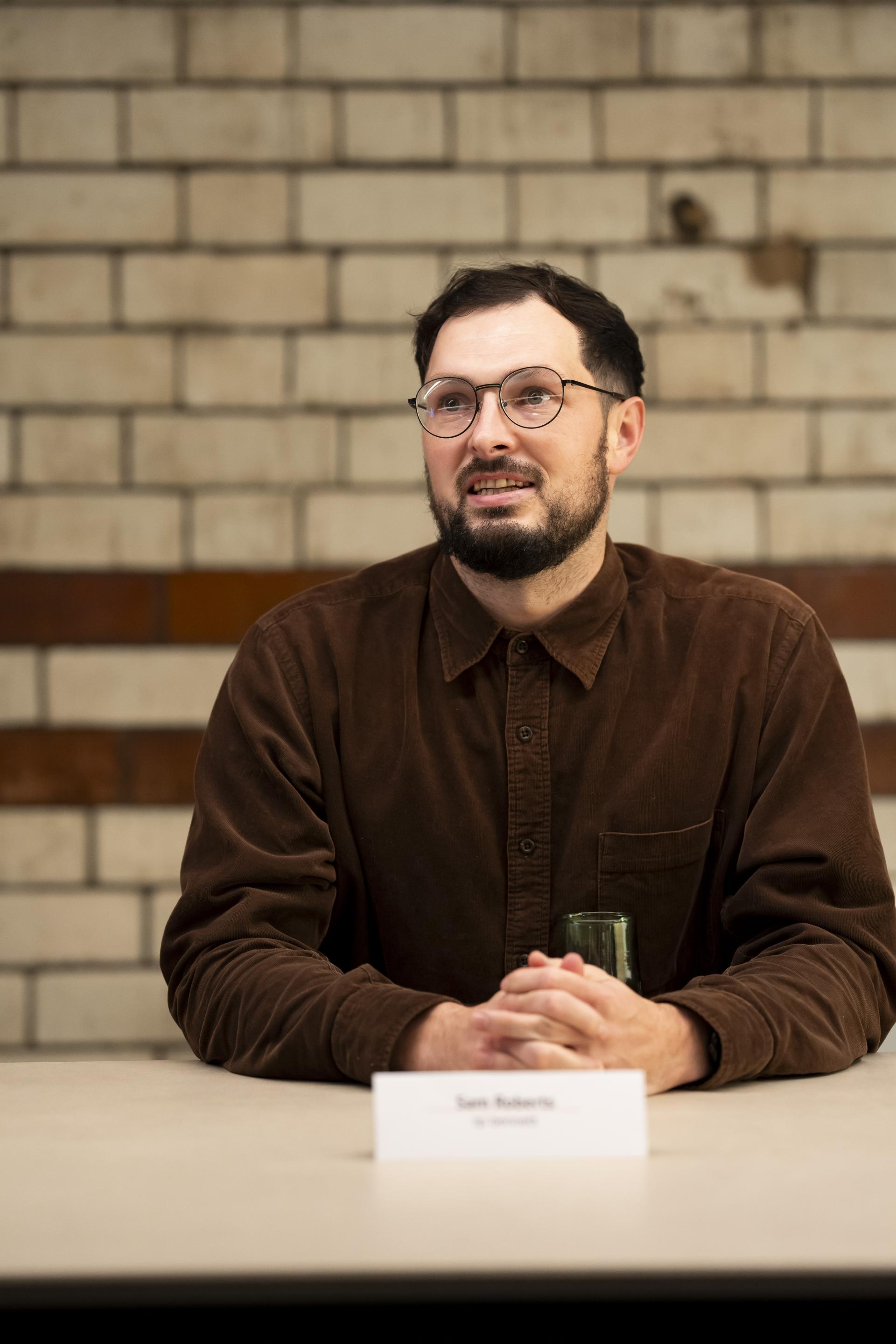
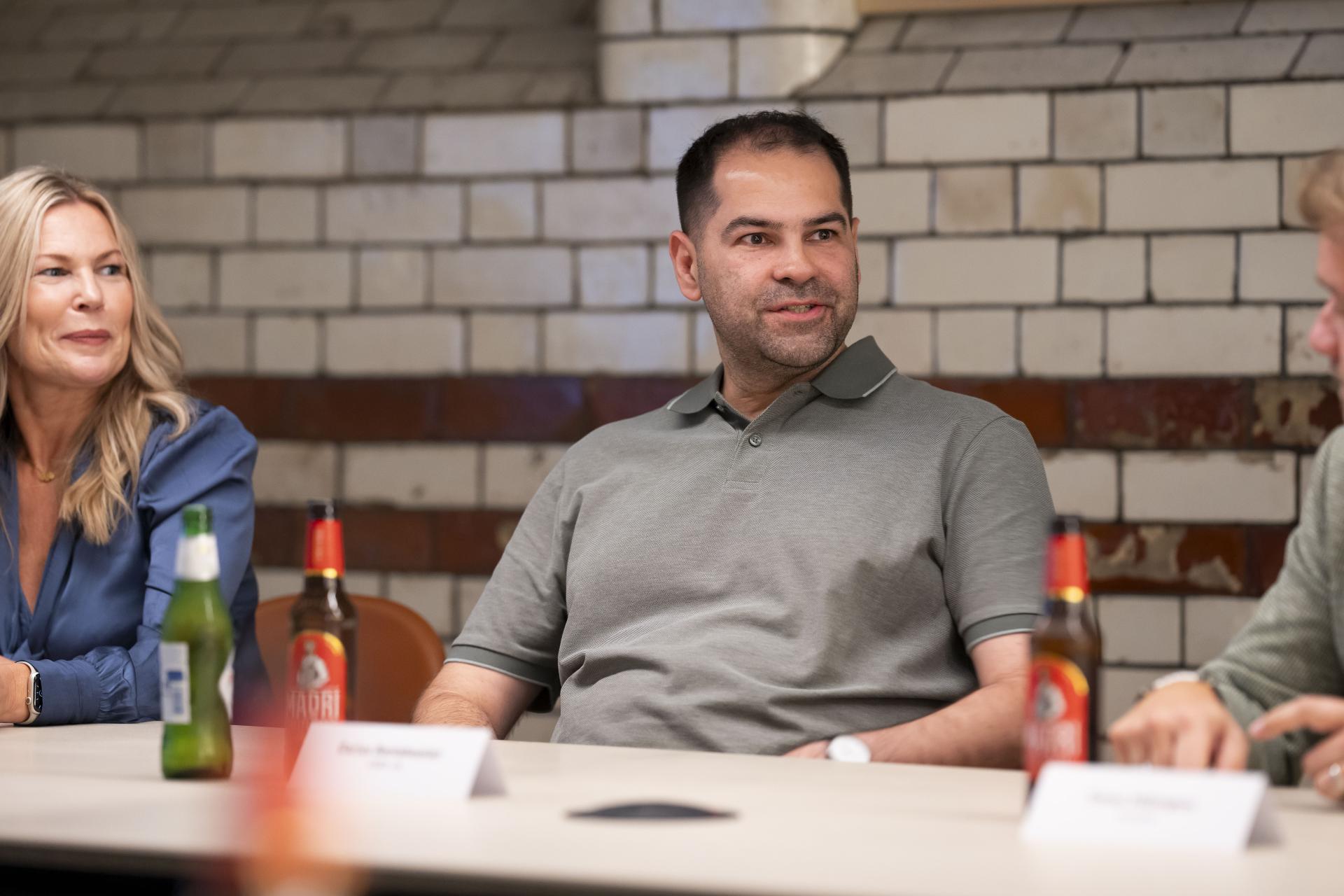
The perfect combination?
This multisource approach prompted David to ask whether a single “perfect solution” could exist?
The consensus – perhaps not, at least for now. But the constant that is required in any kind of data collection, Simon commented, is human involvement. “You can’t beat walking round a client’s existing site to know exactly how it’s being used. A video walk through shows a moment in time, but sitting there – seeing, hearing, and smelling it, all those sensory elements may have bearing on why that workspace is not working.”
“Very true”, agreed Ian.
“In some ways, we’ve lost a bit of that”, added Simon.
“And does there need to be a third party involved, in addition to the designer?” David asked.
Simon believes this would also lead to a loss of connection. And for that reason, it would be an unusual situation to receive a brief through a workplace consultant, rather than be involved first-hand. “You lose the ability to probe into the data – it wouldn’t be holistic.”
“You may have the numbers”, said Darius, “but what you’d lose is a sense of the culture. That’s the human element. It’s establishing what the business is really like, what does it stand for?”
Lots of agreement came from around the table here.
Stephanie shared AtkinsRealis’ approach, which combines the perspective of both designer and researcher (expertise held by her colleague, Archontia Manolakelli – who you may recognise from our past roundtables).
When you get the two together - design and research - it’s magic - Stephanie Porfyriou, AtkinsRéalis
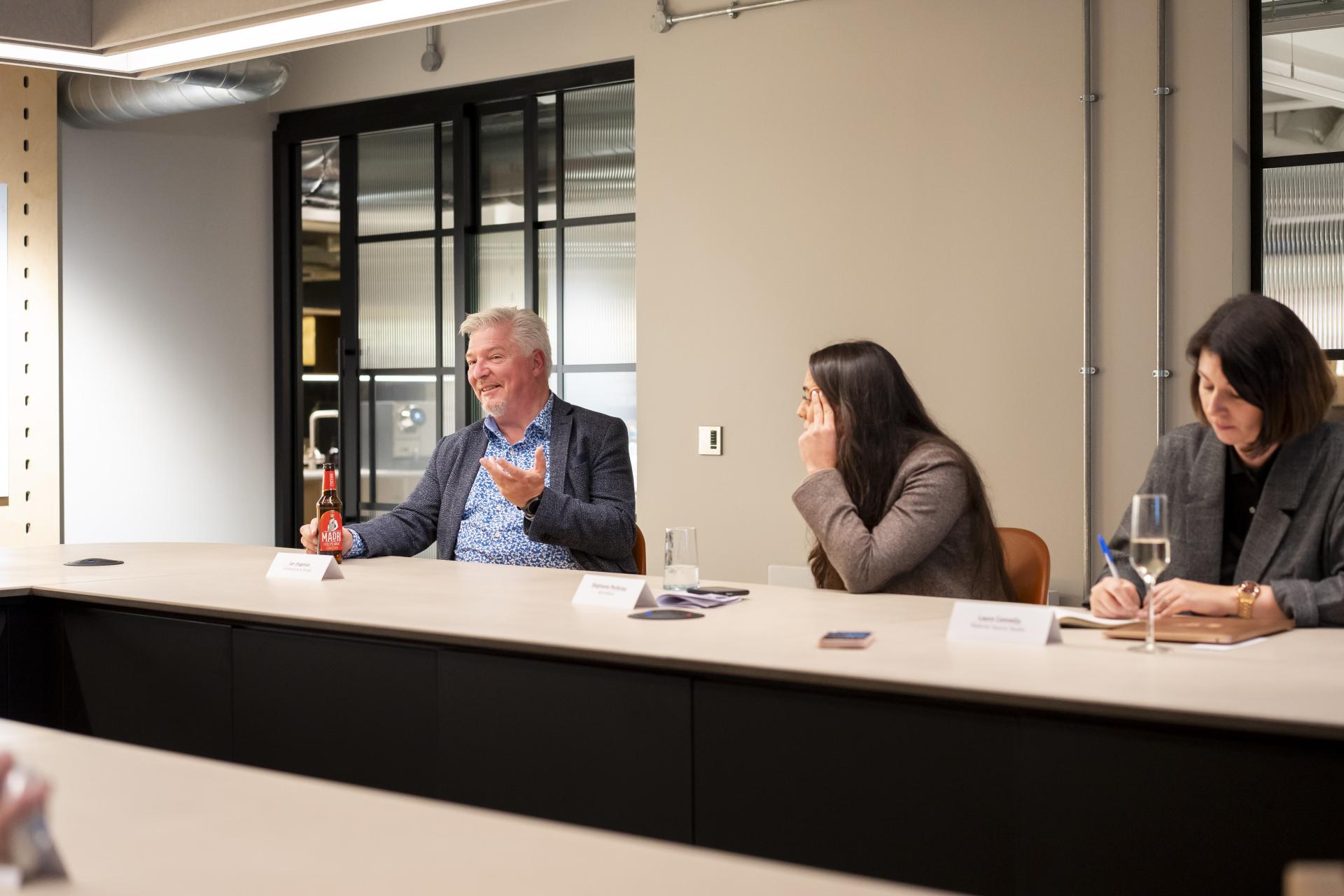
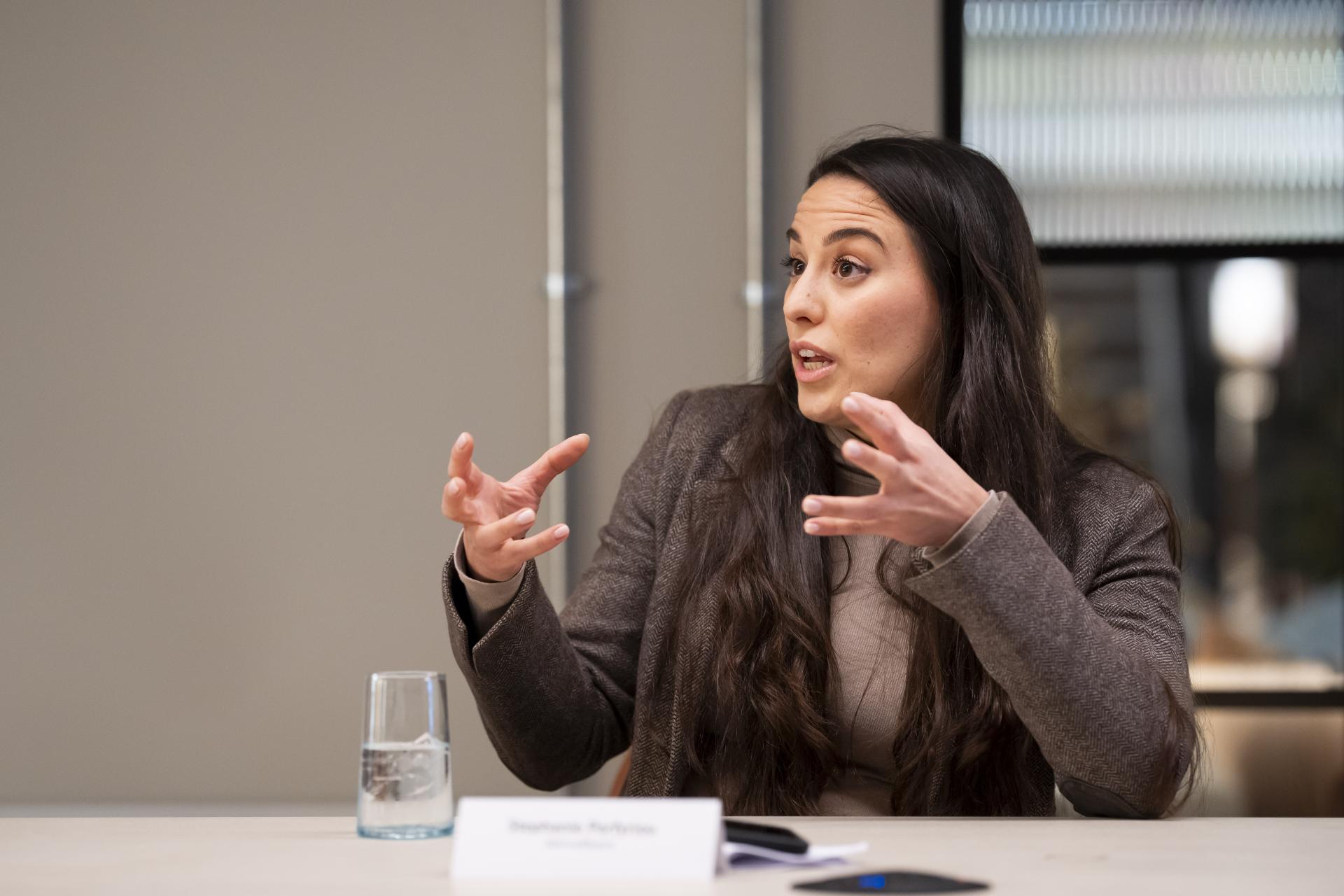
Digital twins
On the face of it, digital twins seem like a sure-fire investment. But relatively new, have their benefits been fully communicated? David asked Sam to summarise the key benefits to clients.
“We can build exact replicas of real-world buildings in digital form, and all the data points connect back into this model. It looks like the building you’re in, but you’re overlaying all the data. For example, with temperature, you’ll see where the cold is. And you might then overlay that with desk occupancy to see why people aren’t sitting in certain areas.
“This can then be customised for each person or department, so facilities management might want to see how the building is running, but the people working there may want a different interface that shows where’s free.”
The potential for this is vast, and something we’ve not seen fully yet, Simon adds. “When you’re taking a building down you’ve got a digital twin, so you can give it to a demolition expert and say, ‘that’s what the building was, we know all the risks, there’s asset tracking on the floorplate’ – this point is yet to be reached.”
But it’s certainly on the horizon. “Because we’re already making digital models, turning them into digital twins isn’t that big a step forward”, said Sam, “it’s using a lot of the data points we already have access to and connecting them in a way that reflects the building in digital form.”
A further benefit was raised by Ian in feeding circular economy. “When you’re looking at keeping materials in circularity – this could be fantastic.” Sam agreed, sharing that tp bennett is looking to use the tool as part of its retrofit activity.
As with anything, there are challenges, namely Sam said in the constant upkeep that’s required for digital twins. But the potential is clear, commented Darius.
Looking on a wider scale, digital twins are being embraced by not only developers and building operators, but pioneering cities such as Singapore, with its Virtual Singapore software created by Bentley Systems. Closer to home in the UK, Bradford Council is said to be working with the University of Bradford to "develop the country’s first large-scale, open-source digital twin."
An article on Harvard Business Review reads, "Unlike the clunky, custom-made and pricey versions of the past, today’s digital twins are fast, inexpensive and far more advanced."
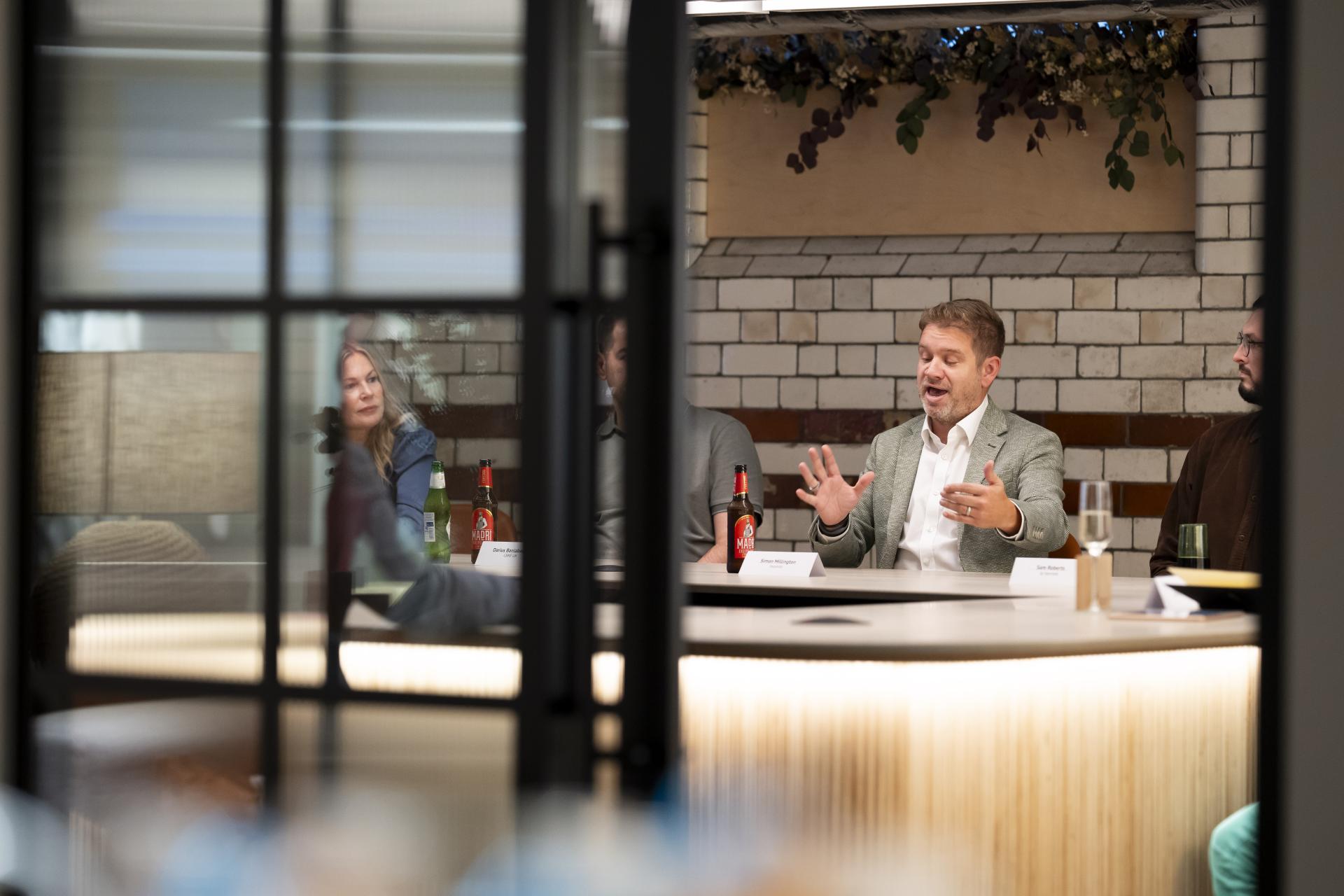
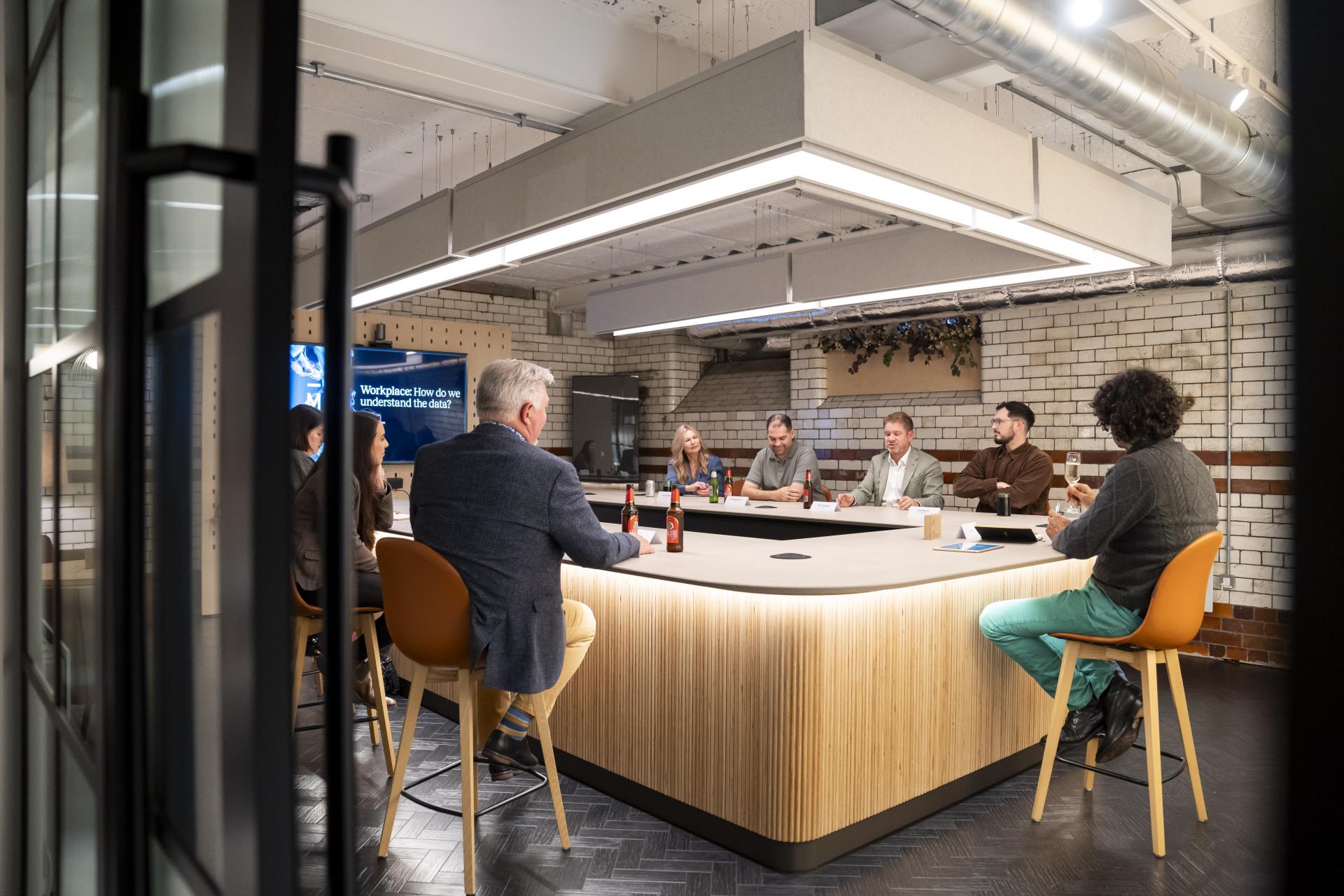
Data, data, everywhere…
While there’s perhaps no denying that data is crucial to the design of any space, without proper analysis to track patterns and establish trends, what’s the point? David asked the guests to consider how good as a sector we are at the interpretation of data.
The topic of potential was once again raised.
“There are ridiculous amounts”, Ian replied. “If you look at the data we use for design, we’re only scratching the surface. But if you look at the data accountants use, for example, it’s huge. Speaking of curiosity, you could get lost in it.”
“It’s how you relay that data back”, said Sam. “We’ve been working with FM Systems on customised dashboards, and they believe there should be a tiered system for who sees what information. Because when you’re given a lot of data it can be overwhelming. So by using graphics to relay it, we can make it valuable.”
Stephanie agreed. AtkinsRealis uses a visualisation tool called Power BI to transform data into an interactive dashboard for clients. A solution that others in the room described as complicated.
Trend tracking & response
Referring to the previous evening’s seminar, Simon highlighted the ‘TWaTs’ trend as being problematic (Tuesdays, Wednesdays, Thursdays typically the busiest in an office), and making desk sharing hard to plan. “While the data is certainly there, the technology to stitch it together to show in someone’s diary, ‘you have Teams calls all day, why are you coming into the office? Try Friday when your colleagues are in’, is not. We need to cut off the top of the week and pad out the less popular days at either side. That way you take the pressure off.”
It sounds like a great solution, but Simon acknowledges there are GDPR issues around accessing peoples’ calendars. “If all the tools worked together, we could create a genuinely more sustainable and efficient workplace. That’s where we want to get to – a static headcount across the week. Though it’s a real challenge.”
There is a cultural way of shaping this, Ian suggests, and that’s by allowing hybrid, but enforcing office presence on Mondays and Fridays.
Simon disagrees – “The approach should be softer. You could be asking someone to commute for an hour to sit on calls. Let them stay at home.”


Post-occupancy pick-up
The topic of post-occupancy analysis continued, with David asking, “do most clients accept that they need to do post-occupancy?”
They don’t, came the response. “Once a scheme's done, it’s done”, was the consensus. “Mindboggling’, said David.
“8% of a project budget can be saved six-months after completion through a post-occupancy study highlighting something wasn’t right and needs tweaking”, commented Simon. “It’s a cycle that should never stop. But we almost have to do the sales pitch about why it’s valuable.”
This is a similar scenario for Darius. “Generally, clients don’t want it. If they do, it’s those with a large portfolio and it can feed into the next project.
“The other thing to consider is how useful is that information if the study is only done over a short period of time? Probably not very. You need at least 6-12-months.”
Simon remembers being at the launch of the BCO’s ‘guide to post-occupancy’ – in 2005 (a link to this can be found here). It was revisited just earlier this year. Since then, he can count “on one-hand” how many they’ve carried out.
“It’s easier than ever now to do it with the systems in place, but why is the agenda not being pushed forward?” he asked. “It needs a revisit.”
Digital twins also come up against the same barriers, commented Sam. “We get asked ‘why?’ a lot.” Feedback loops he said could work to show the value.
“How do you sell the principles of data-driven design and post-occupancy then?” asked David.
It’s a two-pronged approach, suggested Simon. “Data-driven because it reduces the risk of ‘getting it wrong’. Post-occupancy because it not only does the healthy check back, but it ensures you can course correct in other areas.”
Budget was said to be the ultimate driver in the current lack of adoption. But Sam stressed again the point that money can be saved through the utilisation of these tools – though perhaps “the narrative isn’t quite hitting home just yet”. And, in fact, the roundtable guests agreed in view of a wider scheme, it costs just a fraction.
People will spend a fortune on fit-out, and six-months down the line, no one’s come back, and they don’t know why – Ian, Corstorphine & Wright
Stephanie believes the wellbeing benefits for people far outweigh the cost – “It’s important to improve peoples’ lives and to make sure they want to go to the office – we are designing for them”, she said.
“Are clients more informed now?” David asked. Yes, the guests agreed. What was considered “niche” pre-lockdown, according to Darius, is now much more widely acknowledged, if not always embraced. The incentive being to get people back into the office by making it better than it is at home.
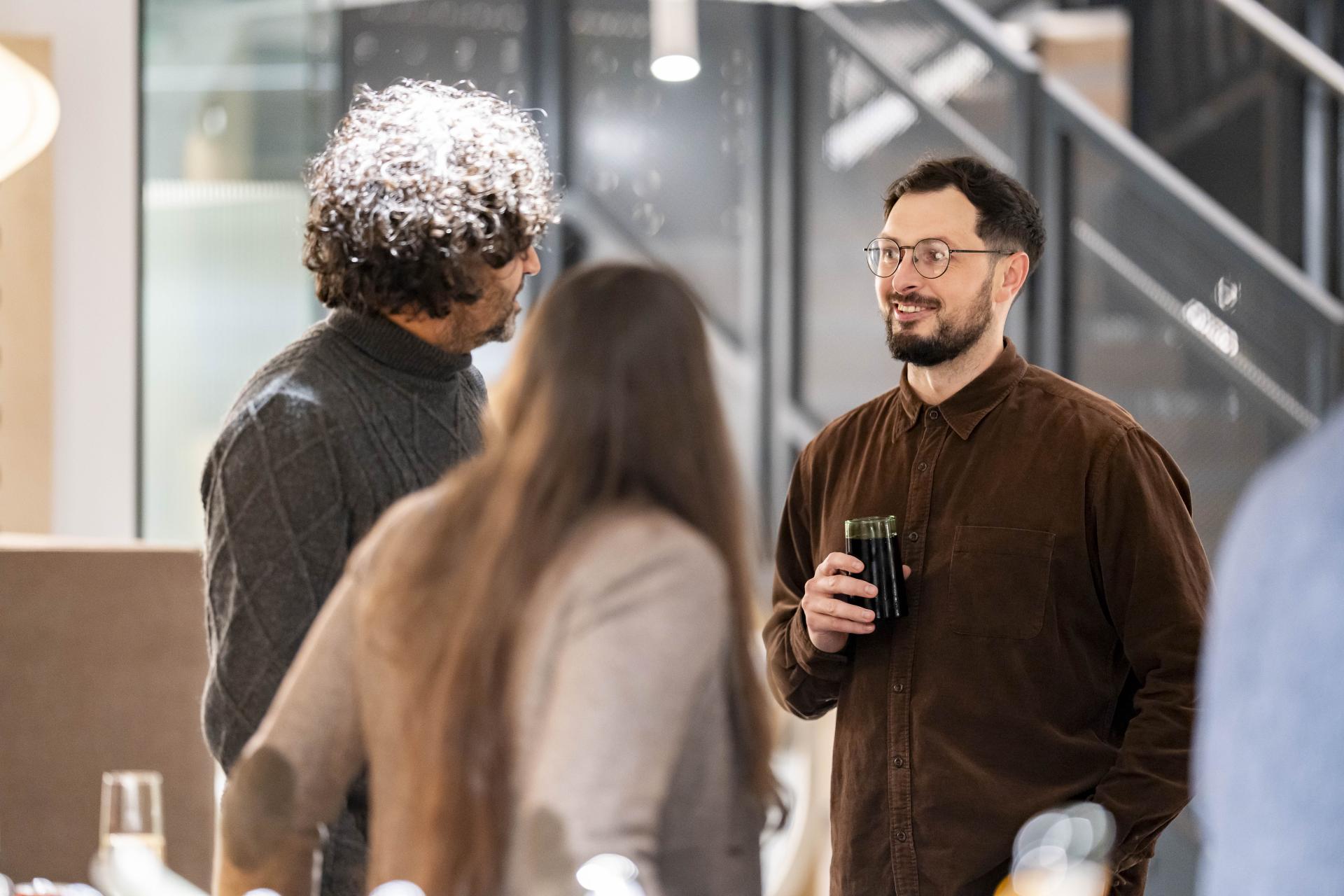
Have people returned to the office?
“The crucial point in all of this, is have people come back to the office?” suggested David. “Data can give us the answers.” And, it can inform decisions around real estate.
When it comes to leases, four-years on from the pandemic, Simon shared many businesses are looking at adjusting their portfolios. “Data is so important to managing that real estate. Asking questions such as whether a mid-cycle break should be exercised, for example.”
“What’s the situation with leases now?” David asked, “Gone are the days of the 10-year lease”…
“Five and three”, answered Simon. “Leases are shorter with more incentives”, added Ian.
“Though there should always be a cycle of analysis”, said Simon.
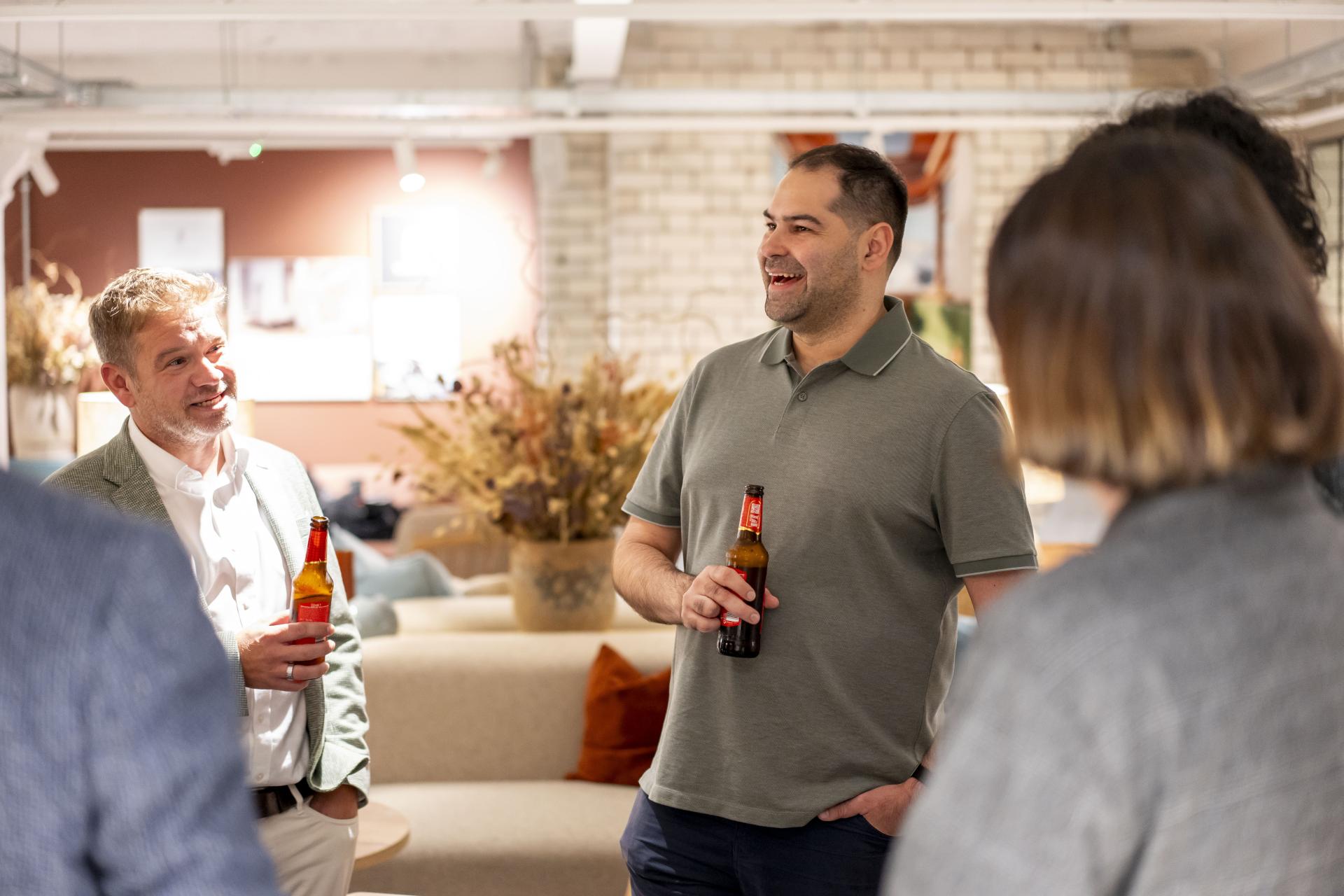
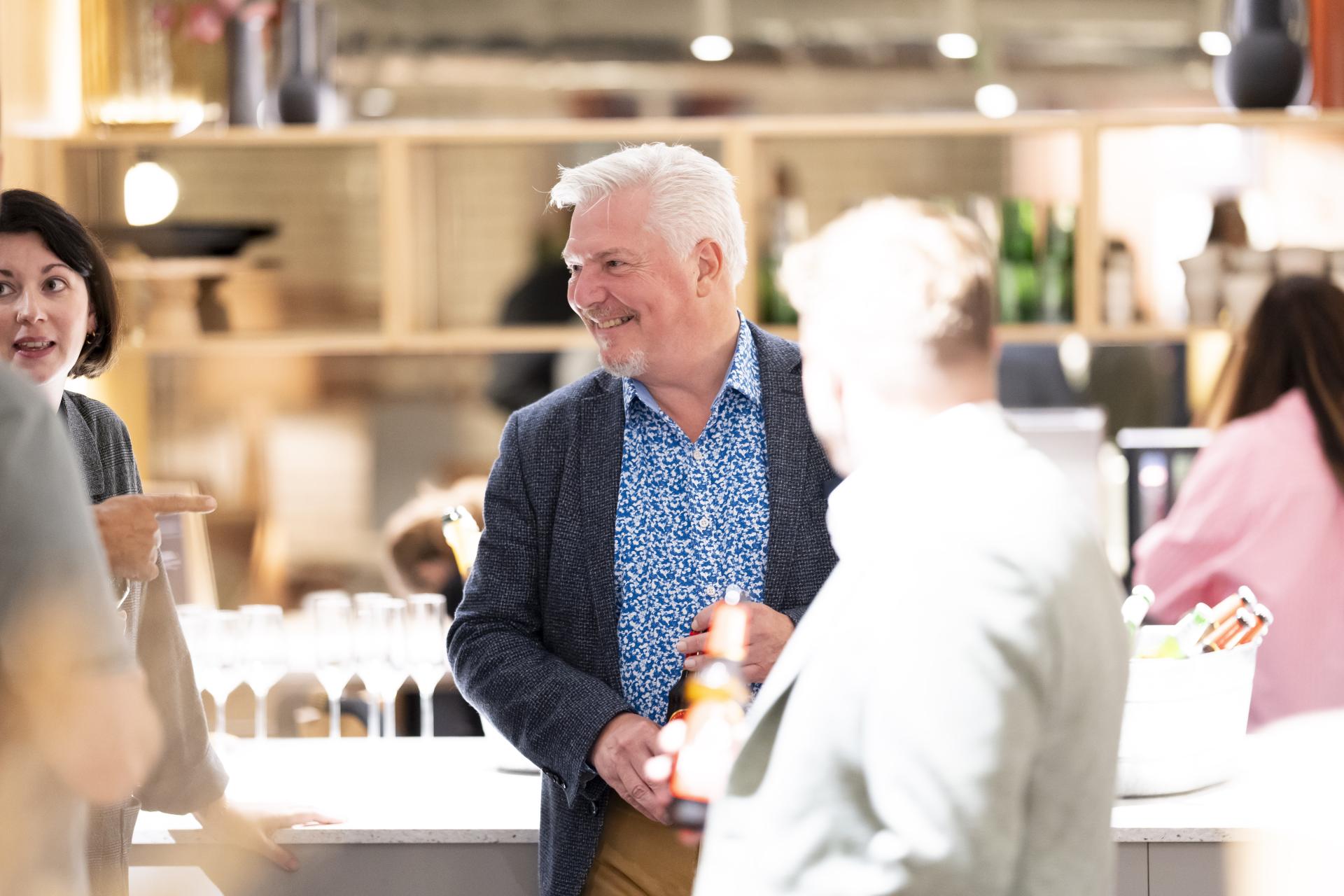
Can, and should, remote workers be tracked?
Data skewing was agreed as being rife when it comes to remote data collection. Sam highlighted a particular study at a university, where occupancy was recorded through Wifi usage. However, left laptops were being identified as people, leading to the results being inaccurate.
Stephanie agreed it’s difficult. And not only in terms of numerical data collection, but also establishing whether someone’s set-up at home is supporting their wellbeing. “There’s a lack of physical oversight – is it too cold, is it too loud? You can’t track performance and engage when someone is working from home”, she commented.
“This is the role of the office”, added Simon. “Working from home is great – but it can’t be every day. The role of the office is reinvigorating that absorption of analogue culture and skillset.”
“Working from home is easier with privilege”, said Ian.
Bringing the conversation to a close, for now, David touched on the ethics of data collection.
Stephanie commented, it’s about asking for “informed consent” and ensuring “transparency with participants”.
“We don’t track people, we track the numbers”, commented Sam.
If you’ve not already done so, be sure to read our seminar write-up on: How are we embracing tech in the return to workplace? Keep an eye on our social feeds for more insight into data, and particularly, the importance of post-occupancy studies. Plus, stay tuned for individual interviews with some of our roundtable guests coming soon.
Huge thanks to all who joined us, and to our supporters for the evening, Forbo – founding partners at both Material Source Studio Manchester & Glasgow.
All image credits: Victoria Middleton







